technological singularity
description: predicted future event in which a superhuman artificial general intelligence is made that iteratively redesigns itself to rapidly become much more intelligent, and a rapid general technological and social change follows that is beyond prediction
96 results

The Transhumanist Reader
by
Max More
and
Natasha Vita-More
Published 4 Mar 2013
At the very least the term “singularity” has led to many unfortunate assumptions that technological singularity involves some form of mathematical singularity and can hence be ignored as unphysical. This essay is attempting a simple taxonomy of models of technological singularity, hopefully helping to disambiguate the different meanings of the word. It also aims at a brief review of formal quantitative models of singularity-like phenomena, in the hope of promoting a more stringent discussion of these possibilities. Definitions of Technological Singularity A brief list of meanings of the term “technological singularity” found in the literature and some of their proponents: A.
…
Appeal to Autonomy Appeal to Interests Appeal to Natural Law Conclusion 34 Freedom by Design Introduction Legal Right by Design: Cognitive Liberty Design Thinking and Cognitive Liberty Caveats on Concept: Fictions of Freedom Freedom in Spite of All Else Part VIII Future Trajectories: Singularity 35 Technological Singularity I. What is the Singularity? II. Can the Singularity Be Avoided? III. Other Paths to the Singularity IV. Strong Superhumanity and the Best We Can Ask For 36 An Overview of Models of Technological Singularity Introduction Definitions of Technological Singularity Models Accelerating Change Discussion 37 A Critical Discussion of Vinge’s Singularity Concept Comment by David Brin: Singularities Comment by Damien Broderick Comment by Nick Bostrom: Singularity and Predictability Comment by Alexander Chislenko: Singularity as a Process, and the Future Beyond Comment by Robin Hanson: Some Skepticism Comment by Max More: Singularity Meets Economy Comment by Michael Nielsen Comment by Anders Sandberg: Singularity and the Growth of Differences Part IX The World’s Most Dangerous Idea 38 The Great Transition What is Transhumanism?
…
Vinge, Vernor (1983) “First Word.” Omni 10 (January). Earlier essay on “the Singularity.” “The Coming Technological Singularity: How to Survive in the Post-Human Era,” by Vernor Vinge, was presented at the VISION-21 Symposium sponsored by NASA Lewis Center and the Ohio Aerospace Institute, March 30–31, 1993. Copyright © Vernor Vinge 1993. http://www-rohan.sdsu.edu/faculty/vinge/misc/singularity.html 36 An Overview of Models of Technological Singularity Anders Sandberg This essay reviews different definitions and models of technological singularity. The models range from conceptual sketches to detailed endogenous growth models, as well as attempts to fit empirical data to quantitative models.

Our Final Invention: Artificial Intelligence and the End of the Human Era
by
James Barrat
Published 30 Sep 2013
We both believed the intelligence explosion wouldn’t end well. Chapter Eight The Point of No Return But if the technological Singularity can happen, it will. Even if all the governments of the world were to understand the “threat” and be in deadly fear of it, progress toward the goal would continue. In fact, the competitive advantage—economic, military, even artistic—of every advance in automation is so compelling that passing laws, or having customs, that forbid such things merely assures that someone else will. —Vernor Vinge, The Coming Technological Singularity, 1993 This quotation sounds like a fleshed-out version of I. J. Good’s biographical aside, doesn’t it?
…
AI researcher Ben Goertzel told me, “Vernor Vinge saw its inherent unknowability very clearly when he posited the notion of the technological singularity. It’s because of that that he doesn’t go around giving speeches about it because he doesn’t know what to say. What’s he going to say? ‘Yeah I think we’re going to create technologies that will be much more capable than humans and then who knows what will happen?’” But what about the invention of fire, agriculture, the printing press, electricity? Haven’t many technological “singularities” already occurred? Disruptive technological change is nothing new, but no one felt compelled to come up with fancy names for its occurrences.
…
J., ed., The Scientist Speculates, an Anthology of Partly Baked Ideas (London: William Heinemann, Ltd. 1962.) Speculations Concerning: Good, I. J., The 1998 “Computer Pioneer Award” of the IEEE Computer Society, Biography and Acceptance Speech (1998), 8. 8: THE POINT OF NO RETURN But if the technological Singularity: Vinge, Vernor, “The Coming Technological Singularity,” 1993, http://www-rohan.sdsu.edu/faculty/vinge/misc/WER2.html. This quotation sounds a lot: Could Good have read Vinge’s essay, inspired by his own earlier essay, and then had a change of heart? I find that unlikely. By his death Good had published some three million words of scholarship.

The Economic Singularity: Artificial Intelligence and the Death of Capitalism
by
Calum Chace
Published 17 Jul 2016
So much so that people talk about a coming technological singularity. The term “singularity” is borrowed from maths and physics, where it means a point at which a variable becomes infinite. The usual example is the centre of a black hole, where matter becomes infinitely dense. When you reach a singularity, the normal rules break down, and the future becomes even harder to predict than usual. In recent years, the term has been applied to the impact of technology on human affairs.[iv] Superintelligence and the technological singularity The technological singularity is most commonly defined as what happens when the first artificial general intelligence (AGI) is created – a machine which can perform any intellectual task that an adult human can.
…
Chapter 6.6 adopted Kevin Kelly’s term Protopia for a successful transition, and suggested that the blockchain might turn out to be the mechanism to administer society’s collectively owned assets, notably its artificial intelligence. 7.2 – The two singularities In my previous book, “Surviving AI”, I wrote at length about the challenge and the opportunity presented by the technological singularity, the moment when (and if) we create an artificial general intelligence which continues to improve its cognitive performance and becomes a superintelligence. Ensuring that we survive that event is, I believe, the single most important task facing the next generation or two of humans – along with making sure we don’t blow ourselves up with nuclear weapons, or unleash a pathogen which kills everyone. If we secure the good outcome to the technological singularity, the future of humanity is glorious almost beyond imagination.
…
On the other hand, if it is coming at all, the economic singularity is coming sooner than the technological singularity. No-one knows how long it will take to build an artificial general intelligence, but it looks tremendously hard. It is probably only a matter of time, but that time may well be quite a few decades. The economic singularity is likely to be with us in two or three decades – perhaps not in the sense that a majority of people will be unemployable by then, but in the sense that it will be obvious and undeniable that it is going to happen. Asset prices may collapse at that point. Relatively speaking, then, the technological singularity is more important but less urgent, while the economic singularity is less important but more urgent. 7.3 – What is to be done?
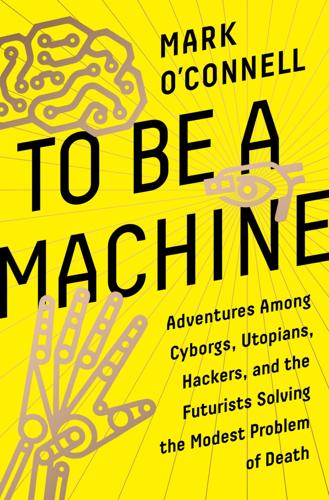
To Be a Machine: Adventures Among Cyborgs, Utopians, Hackers, and the Futurists Solving the Modest Problem of Death
by
Mark O'Connell
Published 28 Feb 2017
In his 1958 obituary for the physicist John von Neumann, with whom he had worked on the Manhattan Project, Stanislaw Ulam wrote about a conversation they once had about “the ever accelerating progress of technology and changes in the mode of human life, which gives the appearance of approaching some essential singularity in the history of the race beyond which human affairs, as we know them, could not continue.” The first substantial statement of the concept of a Technological Singularity is usually attributed to the mathematician and science fiction writer Vernor Vinge. In an essay called “The Coming Technological Singularity: How to Survive in the Post-human Era,” first delivered as a paper at a 1993 conference organized by NASA, Vinge claimed that “within thirty years, we will have the technological means to create superhuman intelligence.
…
And the movement’s influence was perceptible, too, in Elon Musk’s and Bill Gates’s and Stephen Hawking’s increasingly vehement warnings about the prospect of our species’ annihilation by an artificial superintelligence, not to mention in Google’s instatement of Ray Kurzweil, the high priest of the Technological Singularity, as its director of engineering. I saw the imprint of transhumanism in claims like that of Google CEO Eric Schmidt, who suggested that “Eventually, you’ll have an implant, where if you just think about a fact, it will tell you the answer.” These men—they were men, after all, almost to a man—all spoke of a future in which humans would merge with machines.
…
Anders and the attractive Frenchwoman to my right were engaged in what seemed to me an impenetrably technical discussion about the progress of research into mind uploading. The conversation had turned to Ray Kurzweil, the inventor and entrepreneur and director of engineering at Google who had popularized the idea of the Technological Singularity, an eschatological prophecy about how the advent of AI will usher in a new human dispensation, a merger of people and machines, and a final eradication of death. Anders was saying that Kurzweil’s view of brain emulation, among other things, was too crude, that it totally ignored what he called the “subcortical mess of motivations.”
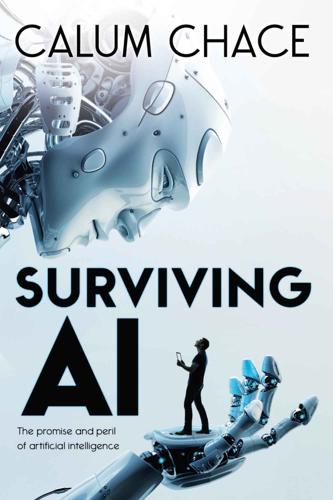
Surviving AI: The Promise and Peril of Artificial Intelligence
by
Calum Chace
Published 28 Jul 2015
In which case it may bestow technological innovations on us at a bewildering rate – perhaps so fast that un-augmented humans simply could not keep up. This scenario is called a technological singularity, a term we encountered in chapter three, and which means a point where the normal rules cease to apply, and what lies beyond is un-knowable to anyone this side of the event horizon. As we shall see below, there is no reason why a technological singularity must necessarily be a positive event, but the early adopters of the idea were almost unanimously convinced that it would be. This confidence has been parodied as an article of faith and likened to the Christian prophesy of “rapture” (from the Latin for “seizing”), which foresees Christ taking the faithful up into heaven during the second coming.
…
Or it could lead to an economy of radical abundance, where nobody has to work for a living, and we are all free to have fun, and stretch our minds and develop our faculties to the full. I hope and believe that the latter is possible, but we also need to make sure the process of getting there is as smooth as possible. The arrival of superintelligence, if and when it happens, would represent a technological singularity (usually just referred to as “the singularity”), and would be the most significant event in human history, bar none. Working out how to survive it is the most important challenge facing humanity in this and the next generation(s). If we avoid the pitfalls, it will improve life in ways which are quite literally beyond our imagination.
…
But we may lose this race up the value chain if AI systems are clambering up it as fast as we are, or faster. So there may well come a time when a majority of jobs can be performed more effectively, efficiently or economically by an AI than they can be done by a human. This could be called the economic singularity, (29) by analogy with the technological singularity which we will discuss in chapter 6. During the Great Depression, unemployment peaked at 25% of the US population in 1933, and the resulting trauma is seared into the political memory even now. Social provision for the unemployed has improved greatly since then, and countries (for instance in southern Europe) with similar levels of unemployment today don’t seem so desperate.

The Lights in the Tunnel
by
Martin Ford
Published 28 May 2011
World-renowned cosmologist and author of the book, A Brief History of Time, Stephen Hawking, has said, “Computers are likely to overtake humans in intelligence at some point in the next hundred years.”35 Inventor and author Ray Kurzweil, who received the National Medal of Technology from President Clinton in 1999, is far more optimistic and predicts that machines will achieve true intelligence by 2029. Kurzweil is also one of the leading proponents of the technological singularity, which he expects to occur by the year 2045.36 This concept, which was originally introduced by the mathematician and author Vernor Vinge,37 suggests that at some point in the future, technological progress will simply explode incomprehensibly. Basically, things will just get away from us. If you look at the now familiar chart that follows, the technological singularity would occur at some point close to where the line becomes nearly vertical. Beyond this point, it is just straight up.
…
(Please see “The Technology Paradox” in the Appendix for more on this.) ] In this book, we won’t again stray into this more speculative arena (except in the last sections of the Appendix). The ideas presented in this book do not depend on the occurrence of the technological singularity. The standard we have set is much lower: we are concerned only with the possibility that machines will become capable of performing most average, routine jobs. The singularity represents a far more extreme case. It’s fair to say, however, that if something along the lines of the technological singularity is to occur, we may first need a paradigm shift in the way our economy works—or at least some changes in our economic architecture. Otherwise, we will be in for quite a shock.
…
Web: http://www.census.gov/Press-Release/www/releases/archives/education/011196.html 32 William Easterly, The Elusive Quest for Growth: Economists’ Adventures and Misadventures in the Tropics, Cambridge, MA, MIT Press, 2002, p.53. 33 “Outsourcing not the Culprit in Manufacturing Job Loss”, AutomationWorld, December 9th, 2003. Web: http://www.automationworld.com/webonly-320 34 Alan Greenspan, The Age of Turbulence, New York, The Penguin Press, 2007, p.397. 35 ABC News 20/20 Special, “Last Days on Earth”, 2006 36 Kurtzweil predicts the Technological Singularity by 2045: Fortune Magazine, May 14, 2007, Web: http://money.cnn.com/magazines/fortune/fortune_archive/2007/05/14/100008848/ 37 “Vernor Vinge on the Singularity,” Web: http://mindstalk.net/vinge/vinge-sing.html Chapter 3: Danger 38 Robert J. Shapiro, Futurecast: how superpowers, populations, and globalization will change the way you live and work, New York, St.
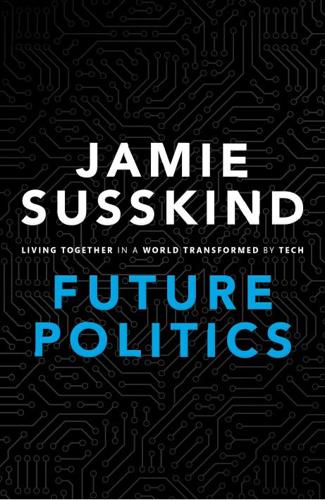
Future Politics: Living Together in a World Transformed by Tech
by
Jamie Susskind
Published 3 Sep 2018
utm_ cid=mash-com-Tw-tech-link%23sd613jsnjlqd#HJziN5r0aGq5> (accessed 28 November 2017). Murray Shanahan, The Technological Singularity (Cambridge, Mass: MIT Press, 2015), 12. BBC, ‘Google Working on “Common-Sense” AI Engine at New Zurich Base’, BBC News, 17 June 2016 <http://www.bbc.co.uk/news/ technology-36558829> (accessed 30 November 2017); Blue Brain Project <https://bluebrain.epfl.ch/page-56882-en.html> (accessed 6 December 2017). Bostrom, Superintelligence, 30. Shanahan, Technological Singularity, 47. Garry Kasparov, ‘The Chess Master and the Computer’, New York Review of Books, 11 February 2010, cited in Susskind and Susskind, Future of the Professions, 276.
…
Bostrom cheerfully suggests it would not be smart in the sense that ‘a scientific OUP CORRECTED PROOF – FINAL, 26/05/18, SPi РЕЛИЗ ПОДГОТОВИЛА ГРУППА "What's News" VK.COM/WSNWS 366 FUTURE POLITICS genius is smart compared with the average human being,’ but rather ‘smart in the sense that an average human being is smart compared with a beetle or a worm.’ 21 He adds, not very reassuringly, that the advent of a superintelligent AI system could lead to a ‘wide range of outcomes’ including ‘extremely good’ ones but also ‘outcomes that are as bad as human extinction’.22 In such a world, politics would revert to its primordial purpose: to ensure survival in a harsh world. Futurists such as Ray Kurzweil contend that in the long run, we’re heading toward a technological singularity, that is, a point at which machine intelligence comes to saturate the universe, absorbing all matter and life in its path.23 There would be no place for homo s apiens in such a world, let alone for politics. I’ve deliberately avoided devoting many pages in this book to how all-powerful AI systems might come to destroy the world—not because such a scenario is impossible, but because it’s already a popular topic of writing and one which can (unhelpfully) obscure the more immediate problems that we’ll have to face in the digital lifeworld.
…
Walter Isaacson, The Innovators: How a Group of Hackers, Geniuses and Geeks Created the Digital Revolution (London: Simon & Schuster, 2014), 184. 50. Susskind and Susskind, Future of the Professions, 157; Kevin Kelly, What Technology Wants (New York: Penguin, 2010), 166–7; Eric Schmidt and Jared Cohen, The New Digital Age: Reshaping the Future of People, Nations and Business (London: John Murray, 2014), 5; Shanahan, Technological Singularity, xviii; Erik Brynjolfsson and Andrew McAfee, The Second Machine Age: Work, Progress, and Prosperity in a Time of Brilliant Technologies (NewYork: W.W. Norton & Company, 2014), 49;Wendell Wallach, A Dangerous Master: How to Keep Technology from Slipping Beyond Our Control (New York: Basic Books, 2015), 67.

Artificial You: AI and the Future of Your Mind
by
Susan Schneider
Published 1 Oct 2019
THE SINGULARITY Kurzweil and other transhumanists contend that we are fast approaching a “technological singularity,” a point at which AI far surpasses human intelligence and is capable of solving problems we weren’t able to solve before, with unpredictable consequences for civilization and human nature. The idea of a singularity comes from mathematics and physics, and especially from the concept of a black hole. Black holes are “singular” objects in space and time—places where normal physical laws break down. By analogy, the technological singularity is projected to cause runaway technological growth and massive changes to civilization.
…
Others, in contrast, are deeply concerned that humans could lose control of superintelligence, because a superintelligence could rewrite its own code and outthink any safeguards we build in. AI could be our greatest invention and our last one. This has been called the “control problem”—how we Earthlings can control an AI that is both inscrutable and vastly smarter than us. We’ve seen that superintelligent AI could be developed during a technological singularity, a point at which ever-more-rapid technological advances—especially an intelligence explosion—reach a point at which humans can no longer predict or understand the technological changes as they unfold. But even if superintelligent AI arises in a less dramatic fashion, there may be no way for us to foresee or control the goals of AI.
…
“Improbable Life: An Unappealing but Plausible Scenario for Life’s Origin on Earth,” video of lecture given at Harvard University, https://youtube/Bt6n6Tu1beg. UNESCO/COMEST. 2005. “The Precautionary Principle,” http://unesdoc.unesco.org/images/0013/001395/139578e.pdf. Vinge, V. 1993. “The Coming Technological Singularity.” Whole Earth Review, Winter. Wiley, Keith. 2014. “Response to Susan Schneider’s ‘The Philosophy of “Her,’ ” H+ Magazine, March 26, http://hplusmagazine.com/2014/03/26/response-to-susan-schneiders-the-philosophy-of-her/. Zimmer, Carl. 2010. “Sizing Up Consciousness By Its Bits,” New York Times, September 20.

Possible Minds: Twenty-Five Ways of Looking at AI
by
John Brockman
Published 19 Feb 2019
He is internationally known for his work in the field of quantum computation, which attempts to harness the exotic properties of quantum theory, like superposition and entanglement, to solve problems that would take several lifetimes to solve on classical computers. In the essay that follows, he traces the history of information theory from Norbert Wiener’s prophetic insights to the predictions of a technological “singularity” that some would have us believe will supplant the human species. His takeaway on the recent programming method known as deep learning is to call for a more modest set of expectations; he notes that despite AI’s enormous advances, robots “still can’t tie their own shoes.” It’s difficult for me to talk about Seth without referencing his relationship with his friend and professor, the late theoretical physicist Heinz Pagels of Rockefeller University.
…
In my own work with experimentalists on building quantum computers, I typically find that some of the technological steps I expect to be easy turn out to be impossible, whereas some of the tasks I imagine to be impossible turn out to be easy. You don’t know until you try. In the 1950s, partly inspired by conversations with Wiener, John von Neumann introduced the notion of the “technological singularity.” Technologies tend to improve exponentially, doubling in power or sensitivity over some interval of time. (For example, since 1950, computer technologies have been doubling in power roughly every two years, an observation enshrined as Moore’s Law.) Von Neumann extrapolated from the observed exponential rate of technological improvement to predict that “technological progress will become incomprehensively rapid and complicated,” outstripping human capabilities in the not too distant future.
…
Indeed, if one extrapolates the growth of raw computing power—expressed in terms of bits and bit flips—into the future at its current rate, computers should match human brains sometime in the next two to four decades (depending on how one estimates the information-processing power of human brains). The failure of the initial overly optimistic predictions of AI dampened talk about the technological singularity for a few decades, but since the 2005 publication of Ray Kurzweil’s The Singularity IS Near, the idea of technological advance leading to superintelligence is back in force. Some believers, Kurzweil included, regard this singularity as an opportunity: Humans can merge their brains with the superintelligence and thereby live forever.

Applied Artificial Intelligence: A Handbook for Business Leaders
by
Mariya Yao
,
Adelyn Zhou
and
Marlene Jia
Published 1 Jun 2018
Retrieved from http://www.technologyreview.com/s/601654/amazon-working-on-making-alexarecognize-your-emotions/ (18) Talbot, D. (2014, September 19). Apps for Autism. MIT Technology Review. Retrieved from http://www.technologyreview.com/s/528191/digitalsummit-first-emotion-reading-apps-for-kids-with-autism/ (19) Technological singularity. (n.d.). In Wikipedia. Retrieved November 17, 2017, from http://en.wikipedia.org/wiki/Technological_singularity 3. The Promises of Artificial Intelligence The promises of AI extend beyond the challenges of Silicon Valley and Wall Street. Emerging technologies like deep learning and conversational interfaces enable us to do far more than drive advertising clicks, streamline sales, and boost corporate profits.
…
Some futurists hypothesize that we may be able to achieve superhuman intelligence by augmenting biological brains with synthesized technologies, but this research is currently more science fiction than science. Once an upgradable intelligent agent does emerge, we will reach what many experts call the technological “singularity," when machine intelligence surpasses human intelligence.(19) Self-evolving agents will be capable of ever-faster iterations of self-improvements, leading to the eventual emergence of superintelligence. To download a visual summary of the Machine Intelligence Continuum, visit the resources section of our book website at appliedaibook.com/resources.

More Everything Forever: AI Overlords, Space Empires, and Silicon Valley's Crusade to Control the Fate of Humanity
by
Adam Becker
Published 14 Jun 2025
But it was an earlier novel, Marooned in Realtime, published in 1986, where Vinge introduced the idea of the Singularity to the readers of his fiction.37 In Marooned, Vinge used a post-Singularity civilization as a plot device: the characters awake in the far future after being placed in stasis, finding that human civilization has seemingly vanished or transcended to a new plane of existence, with a technological Singularity fingered as the likely culprit. In a curious afterword to the book, Vinge explained that he thought this was not merely a fictional conceit. As the year 2000 approached, it was “an ironic accident of the calendar that all this religious interest in transcendental events should be mixed with the objective evidence that we’re falling into a technological singularity.… It’s you, not Della and Wil [the protagonists of Marooned], who will understand the Singularity in the only possible way—by living through it.”38 Expanding on these ideas in a 1993 article titled “The Coming Technological Singularity,” Vinge cited von Neumann and especially Good as forerunners to his ideas.
…
The desire for growth is a general feature of much of capitalism. But the idea of a big future filled with virtually unlimited growth, a future of the specific sort longtermism proffers, has held a great deal of currency in Silicon Valley for decades.36 The most salient example of this is the concept of a technological singularity, usually referred to as the Singularity. Believers in the Singularity claim that technological progress has been accelerating and will continue to do so, leading to a singular point where so much change happens so rapidly that the fundamental nature of daily human life will transform beyond all imagination or comprehension.
…
.… It’s you, not Della and Wil [the protagonists of Marooned], who will understand the Singularity in the only possible way—by living through it.”38 Expanding on these ideas in a 1993 article titled “The Coming Technological Singularity,” Vinge cited von Neumann and especially Good as forerunners to his ideas. “I believe that the creation of greater than human intelligence will occur during the next thirty years,” wrote Vinge, rehearsing the same argument Kurzweil would make more than ten years later in The Singularity Is Near. When greater-than-human intelligence drives progress, that progress will be much more rapid. In fact, there seems no reason why progress itself would not involve the creation of still more intelligent entities—on a still-shorter time scale.… From the human point of view this change will be a throwing away of all the previous rules, perhaps in the blink of an eye, an exponential runaway beyond any hope of control.

In Our Own Image: Savior or Destroyer? The History and Future of Artificial Intelligence
by
George Zarkadakis
Published 7 Mar 2016
Oxford: Oxford University Press. 21Tegmark, M. (2014), ‘Humanity in Jeopardy’, in: Huffington Post, 13 January 2014. 22Tegmark, N., Hawking, S., Russell, S., and Wilczek, F. (2014), ‘Transcendence looks at the implications of artificial intelligence – but are we taking AI seriously enough?’, in: Independent, 1 May 2014. 23Vinge, V. (1993), ‘The coming technological singularity: how to survive in the post-human era’, presented at: the VISION-21 Symposium sponsored by NASA Lewis Research Center and the Ohio Aerospace Institute, 30–31 March, 1993. 24Vinge, V. (1993), ‘The coming technological singularity: how to survive in the post-human era’, presented at: the VISION-21 Symposium sponsored by NASA Lewis Research Center and the Ohio Aerospace Institute, 30–31 March, 1993. 25Kurzweil, R. (1999), The Age of Spiritual Machines, New York: Viking Penguin. 26Dowe, D.
…
Alas, in the universe we inhabit the Analytical Engine, despite its significance, remained mostly unknown. The main features of a modern computer’s architecture were rediscovered nearly a century later. And so was the separation between hardware and software. In this sense, the Analytical Engine was a technological singularity that happened in a world not ready yet to make something useful of it. Similarly to Hellenistic innovations such as the Hero’s Steam Engine and Hipparchus’ Antikythera Mechanism, Babbage’s great invention was well before its time. Nevertheless, Babbage’s achievement is profoundly remarkable.
…
Vernor Vinge is a computer scientist, science fiction writer and winner of the prestigious Hugo Award for science fiction. In his novels, particularly in The Peace War (1984) and in Marooned in Realtime (1986), Vinge was the first to explore a fictitious time in the future that he called ‘the technological singularity’. This is when the human race has transcended into a different form of existence with the assistance of exponentially improving sentient technology. He expressed these narrative ideas more explicitly in a 1993 essay, arguing that the creation of superhuman Artificial Intelligence will mark a point in history where ‘the human era will be ended’.23 The main argument for the inevitability of the AI Singularity in Vinge’s essay is Moore’s Law.

Singularity Rising: Surviving and Thriving in a Smarter, Richer, and More Dangerous World
by
James D. Miller
Published 14 Jun 2012
PRAISE FOR SINGULARITY RISING “There are things in this book that could mess with your head.” —Vernor Vinge, computer scientist; Hugo Award-winning author, A Fire Upon the Deep; essayist, “The Coming Technological Singularity” “The arrow of progress may kick upwards into a booming curve or it may terminate in an existential zero. What it will not do is carry on as before. With great insight and fore thought, Miller’s Singularity Rising prepares us for the forking paths ahead by teasing out the consequences of an artificial intelligence explosion and by staking red flags on the important technological problems of the next three decades.”
…
Although he was a patriotic American and he possessed a sense of morality that most other Westerners would consider normal, the CIA analyst who uncovered the program supported China’s efforts at breeding hyper-geniuses. The analyst had become interested in intelligence enhancement through his studies of the technological Singularity, and he concluded that an unfriendly ultra-AI arising from an intelligence explosion posed a significant threat to mankind’s survival. The analyst believed that because of their tiny budget, the dozen programmers who were working on trying to build a friendly artificial intelligence still had no idea how to accomplish their goals, and he hoped that the Chinese hyper-geniuses would soon realize the necessity of pursuing friendly AI.
…
Hedge funds that find mispriced financial assets have incentives to buy or sell the asset until its price becomes equal to what the fund thinks it should be. A financial asset will be mispriced if the asset’s value doesn’t reflect all available information, such as the likelihood of the technological Singularity. But, you might ask, “So what?” Why does the price of financial assets matter? It matters because the higher a company’s stock price is, the better off its investors are. Most companies put a lot of effort into raising the value of their stock. So here is how Singularity expectations will influence corporate behavior: 1.Hedge fund managers have the incentive and intelligence to spot Singularity signposts. 2.Hedge fund managers have a huge amount of influence over stock prices. 3.Companies care a lot about stock prices. 4.Companies, therefore, have a strong incentive to make decisions that take into account the possibility of a Singularity.

Rise of the Robots: Technology and the Threat of a Jobless Future
by
Martin Ford
Published 4 May 2015
The Singularity The first application of the term “singularity” to a future technology-driven event is usually credited to computer pioneer John von Neumann, who reportedly said sometime in the 1950s that “ever accelerating progress . . . gives the appearance of approaching some essential singularity in the history of the race beyond which human affairs, as we know them, could not continue.”5 The theme was fleshed out in 1993 by San Diego State University mathematician Vernor Vinge, who wrote a paper entitled “The Coming Technological Singularity.” Vinge, who is not given to understatement, began his paper by writing that “[w]ithin thirty years, we will have the technological means to create superhuman intelligence. Shortly after, the human era will be ended.”6 In astrophysics, a singularity refers to the point within a black hole where the normal laws of physics break down. Within the black hole’s boundary, or event horizon, gravitational force is so intense that light itself is unable to escape its grasp. Vinge viewed the technological singularity in similar terms: it represents a discontinuity in human progress that would be fundamentally opaque until it occurred.
…
Yann LeCun, Google+ Post, October 28, 2013, https://plus.google.com/+YannLeCunPhD/posts/Qwj9EEkUJXY. 4. Gary Marcus, “Hyping Artificial Intelligence, Yet Again,” New Yorker (Elements blog), January 1, 2014, http://www.newyorker.com/online/blogs/elements/2014/01/the-new-york-times-artificial-intelligence-hype-machine.html. 5. Vernor Vinge, “The Coming Technological Singularity: How to Survive in the Post-Human Era,” NASA VISION-21 Symposium, March 30–31, 1993. 6. Ibid. 7. Robert M. Geraci, “The Cult of Kurzweil: Will Robots Save Our Souls?,” USC Religion Dispatches, http://www.religiondispatches.org/archive/culture/4456/the_cult_of_kurzweil%3A_will_robots_save_our_souls/. 8.
…
See collateralized debt obligations (CDOs) Center for Economic and Policy Research, 171n Central Intelligence Agency, 46, 85 cervical cancer screening, 152–153 chargemaster prices, 160–161, 164 cheating, MOOCs and, 136–137 Cheney, Dick, 240 chess, 97–98, 122, 123 Chicago, data portal of city of, 87–88 China American consumer spending and, 54 college graduates overqualified for occupations in, 251 consumer demand in, 223–227 globalization and, 53 industrial automation in, 3, 10–11, 225–226 labor’s share of national income in, 41 offshoring and, 120 reshoring and, 9 saving rate in, 224–225 super-intelligence and, 236n China rebalancing, 224–225 Chomsky, Noam, 129, 236 Christensen, Clayton, 142 Chronicle of Higher Education (journal), 139 Chrysler, 76 Circuit City, 16 Cisco, 234 Citigroup, 103, 198 citizen’s dividend, 266–267 Cleveland Clinic, 102 Clifford, Stephanie, 8 climate change, xvii, 211–212, 282–283 Clinton, Bill, 242 cloud computing, 52, 104–107, 109 cloud robotics, 20–23 cobalt poisoning, 145–146 cognitive capability, global competition for jobs and, 120 cognitive computer chip, 72 cognitive computing, 96–104 collaboration software, 64 Collapse: How Societies Choose to Succeed or Fail (Diamond), x collateralized debt obligations (CDOs), 56 college-educated workers, 120–121, 126–128 college graduates, declining income and underemployment for recent, 48–49 College Unbound (Selingo), 140 college wage premium, 48n Colton, Simon, 112 “The Coming Technological Singularity” (Vinge), 233 community colleges, 276–277 comparative advantage, 73–75 compensation. See wages competency-based education (CBE), 138 computers acceleration of power, xii–xiii, 68 (see also Moore’s Law) acquisition of skills by, xv–xvi increase in memory capacity, 63–64 innovation and improvements in, 69–73 predictions of impact of, 31–32, 33–34 S-curve of, 69, 70–71 construction industry, 3D printing and, 180–181 Consumer Price Index (CPI), 38n consumer robots, 197n consumers Chinese, 223–227 demand and, 196–197 permanent income hypothesis, 210–211 workers as, 193–194, 196–198, 221–222 consumer spending, 54 consumer spending/consumption, 200, 202n demand and, 196 guaranteed income and, 269–270 income inequality and, xvi–xvii, 198–202 Cornell University, Creative Machines Lab, 108 corporate profits financial sector, 55 recovery from Great Recession and, 39–40, 202, 203 as share of GDP, 40, 202, 203 correlation vs. cause, big data and, 88–89, 102 costs health care, 160–174 higher education, 140 Coursera, 133, 136 Cowen, Tyler, 65, 123, 126n CPI.
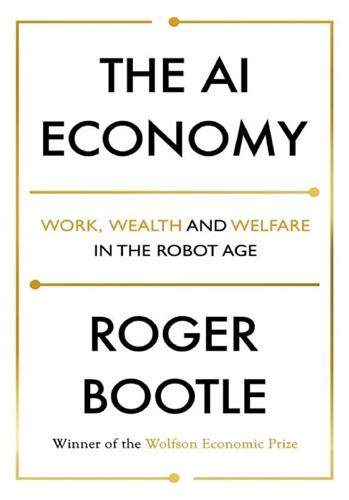
The AI Economy: Work, Wealth and Welfare in the Robot Age
by
Roger Bootle
Published 4 Sep 2019
Whether and when it will ever be there, in the outside world, and with what consequences, is what we must now consider. The first use of the term “singularity” to refer to a future technology driven event seems to have been by the legendary computer pioneer John von Neumann, in the 1950s. But it doesn’t seem to have caught on until, in 1983, the mathematician Vernor Vinge wrote about an approaching “technological singularity.”3 More recently, the “Singularity,” notably now sporting a capital “S,” has become closely associated with the name of Ray Kurzweil, who published his book The Singularity is Near: When Humans Transcend Biology in 2005. He is currently Google’s Director of Engineering. He has predicted that computers will surpass the processing power of a single human brain by 2025.
…
Scott, J. (2017) Against the Grain: A Deep History of the Earliest States, New Haven: Yale University Press. Seldon, A. and Abidoye, O. (2018) The Fourth Education Revolution, Buckingham: University of Buckingham Press. Shackleton, J. (2018) Robocalypse Now? London: Institute of Economic Affairs. Shadbolt, N., and Hampson, R. (2018) The Digital Ape, London: Scribe. Shanahan, M. (2015) The Technological Singularity, Cambridge: The MIT Press. Simon, H. (1965) The Shape of Automation for Men and Management, New York: Harper. Smith, A. (1776) The Wealth of Nations, London: William Strahan. Stiglitz, J. E. (1969) New Theoretical Perspectives on the Distribution of Income and Wealth among Individuals, London: The Econometric Society.
…
16,000, New York Times, June 25, 2012. 30 Chace, C. (2016), p. 15. 31 Quoted in Autor, D. H. (2015) Why are there still so many jobs? The History and Future of Workplace Automation, Journal of Economic Perspectives, Vol. 29 (Summer 2015), p. 8. 32 Susskind and Susskind (2017), p. 276. 33 Ibid., pp. 272–3. 34 Shanahan, M. (2015) The Technological Singularity, Cambridge: The MIT Press, p. 162. 35 Quoted by Jeremy Warner in The Daily Telegraph. 36 Quoted in Kelly (2016), p. 176. 37 Haskel, J. and Westlake, S. (2017) Capitalism Without Capital: The Rise of the Intangible Economy, USA: Princeton University, p. 127. 38 See Autor, D. H. (2015). 39 Chace (2016), pp. 16–17. 40 Kelly (2016). 41 Avent, R. (2016) The Wealth of Humans: Work, Power, and Status in the Twenty-First Century, New York: St.

Thinking Machines: The Inside Story of Artificial Intelligence and Our Race to Build the Future
by
Luke Dormehl
Published 10 Aug 2016
This was the first published work of Vernor Vinge, a sci-fi writer, mathematics professor and computer scientist with a name straight out of the Marvel Comics alliteration camp. Vinge later became a successful novelist, but he remains best known for his 1993 non-fiction essay, ‘The Coming Technological Singularity’. The essay recounts many of the ideas Good had posed about superintelligent machines, but with the added bonus of a timeline. ‘Within thirty years, we will have the technological means to create superhuman intelligence,’ Vinge famously wrote. ‘Shortly after, the human era will be ended.’
…
Before it became closely associated with Artificial Intelligence, the word ‘singularity’ was most commonly used in theoretical physics, where it was used to describe the gravitational centre at the heart of a black hole: the point at which matter collapses in on itself. Like a black hole, the technological Singularity is wholly unfathomable to the human mind. For this reason, speculating about where Artificial General Intelligence could potentially take us is interesting, but ultimately the stuff of science fiction for now. It’s a little like automobile pioneer Henry Ford’s quip about how, had he asked people what they wanted before the arrival of the car, the most common request would be for faster horses.
…
Billions Fewer than We Thought’, Guardian, 28 February 2012: theguardian.com/science/blog/2012/feb/28/how-many-neurons-human-brain 10 Stoller-Conrad, Jessica, ‘Controlling a Robotic Arm with a Patient’s Intentions’, Caltech, 21 May 2015: caltech.edu/news/controlling-robotic-arm-patients-intentions-46786 11 Kever, Jeannie, ‘Researchers Build Brain-Machine Interface to Control Prosthetic Hand’, University of Houston, 31 March 2015: uh.edu/news-events/stories/2015/March/0331BionicHand.php 12 Kurzweil, Ray, ‘The Law of Accelerating Returns’, 7 March 2001: kurzweilai.net/the-law-of-accelerating-returns 13 Linden, David, ‘The Singularity Is Far: A Neuroscientist’s View’, BoingBoing, 14 July 2011: http://boingboing.net/2011/07/14/far.html 14 http://2045.com/press/ 15 Hayworth, Ken, ‘Killed by Bad Philosophy’, Brain Preservation Foundation, January 2010: brainpreservation.org/content-2/killed-bad-philosophy/ Chapter 8: The Future (Risks) of Thinking Machines 1 Cook, James, ‘Elon Musk: Robots Could Start Killing Us All Within 5 Years’, Business Insider, 17 November 2014: uk.businessinsider.com/elon-musk-killer-robots-will-be-here-within-five-years-2014–11 2 Hern, Alex, ‘Elon Musk Says He Invested in DeepMind Over “Terminator” Fears’, Guardian, 18 June 2014: theguardian.com/technology/2014/jun/18/elon-musk-deepmind-ai-tesla-motors 3 Hawking, Stephen et al., ‘Stephen Hawking: “Transcendence Looks at the Implications of Artificial Intelligence … ”’, Independent, 1 May 2014: independent.co.uk/news/science/stephen-hawking-transcendence-looks-at-the-implications-of-artificial-intelligence-but-are-we-taking-9313474.html 4 Hill, Doug, ‘The Eccentric Genius Whose Time May Have Finally Come (Again)’, Atlantic, 11 June 2014: theatlantic.com/technology/archive/2014/06/norbert-wiener-the-eccentric-genius-whose-time-may-have-finally-come-again/372607/ 5 Good, I. J., ‘Speculations Concerning the First Ultraintelligent Machine’, Advances in Computers, 1965. 6 Vinge, Vernor, ‘The Coming Technological Singularity: How to Survive in the Post-Human Era’, Vision-21: Interdisciplinary Science and Engineering in the Era of Cyberspace, 1993. 7 Ulam, Stanislaw, ‘Tribute to John von Neumann,’ Bulletin of the American Mathematical Society: 5, May 1958. 8 Hemingway, Ernest, The Sun Also Rises (New York: Scribner, 1954). 9 Appleyard, Bryan, The Brain Is Wider than the Sky: Why Simple Solutions Don’t Work in a Complex World (London: Weidenfeld & Nicholson, 2011). 10 www.youtube.com/watch?

The Nature of Technology
by
W. Brian Arthur
Published 6 Aug 2009
But in this book I prefer to simply use “technology” for this because that reflects common use. The reason we need three meanings is that each points to technology in a different sense, a different category, from the others. Each category comes into being differently and evolves differently. A technology-singular—the steam engine—originates as a new concept and develops by modifying its internal parts. A technology-plural—electronics—comes into being by building around certain phenomena and components and develops by changing its parts and practices. And technology-general, the whole collection of all technologies that have ever existed past and present, originates from the use of natural phenomena and builds up organically with new elements forming by combination from old ones.
…
And technology-general, the whole collection of all technologies that have ever existed past and present, originates from the use of natural phenomena and builds up organically with new elements forming by combination from old ones. I will have more to say about these second and third categories of technology in the chapters ahead, particularly on how the collective of technology evolves. But because technologies-singular—individual technologies—make up this collective, I want to focus on them for the rest of this chapter. We need to get clear on what exactly they are and what common logic they share. A technology, I said, is a means to fulfill a purpose: a device, or method, or process. A technology does something.
…
It means simply that a jet engine (or more generally, any technology) consists of component building blocks that are also technologies, and these consist of subparts that are also technologies, in a repeating (or recurring) pattern. Technologies, then, are built from a hierarchy of technologies, and this has implications for how we should think of them, as we will see shortly. It also means that whatever we can say in general about technologies-singular must hold also for assemblies or subsystems at lower levels as well. In particular, because a technology consists of main assembly and supporting assemblies, each assembly or subsystem must be organized this way too. So far, recursiveness sounds abstract. But when we look at it in action, it becomes perfectly concrete.

I Hate the Internet: A Novel
by
Jarett Kobek
Published 3 Nov 2016
Like Ray Kurzweil, who Christine identified with Dolos, the Greek spirit of trickery and guile. Ray Kurzweil was the king of technological liberation theology. Or, in other words, he was king of the most intolerable of all intolerable bullshit. He believed in a future where computers would reach a moment of technological singularity. The technological singularity was a bullshit phrase invented by the Science Fiction writer Vernor Vinge. The technological singularity was the name for a theoretical moment in the future when computers would achieve a critical mass of artificial intelligence and wake up and change everything. The way that computers would change everything is by emerging into consciousness and telling people like Ray Kurzweil and Vernor Vinge that they were fucking awesome.

Superintelligence: Paths, Dangers, Strategies
by
Nick Bostrom
Published 3 Jun 2014
Such a growth rate seems fantastic by current lights. Observers in earlier epochs might have found it equally preposterous to suppose that the world economy would one day be doubling several times within a single lifespan. Yet that is the extraordinary condition we now take to be ordinary. The idea of a coming technological singularity has by now been widely popularized, starting with Vernor Vinge’s seminal essay and continuing with the writings of Ray Kurzweil and others.4 The term “singularity,” however, has been used confusedly in many disparate senses and has accreted an unholy (yet almost millenarian) aura of techno-utopian connotations.5 Since most of these meanings and connotations are irrelevant to our argument, we can gain clarity by dispensing with the “singularity” word in favor of more precise terminology.
…
Could the Internet become something more than just the backbone of a loosely integrated collective superintelligence—something more like a virtual skull housing an emerging unified super-intellect? (This was one of the ways that superintelligence could arise according to Vernor Vinge’s influential 1993 essay, which coined the term “technological singularity.”83) Against this one could object that machine intelligence is hard enough to achieve through arduous engineering, and that it is incredible to suppose that it will arise spontaneously. However, the story need not be that some future version of the Internet suddenly becomes superintelligent by mere happenstance.
…
These studies have pointed to the potential of extremely rapid growth given the arrival of digital minds, but since endogenous growth theory is relatively poorly developed even for historical and contemporary applications, any application to a potentially discontinuous future context is better viewed at this stage as a source of potentially useful concepts and considerations than as an exercise likely to deliver authoritative forecasts. For an overview of attempts to mathematically model a technological singularity, see Sandberg (2010). 25. It is of course also possible that there will be no takeoff at all. But since, as argued earlier, superintelligence looks technically feasible, the absence of a takeoff would likely be due to the intervention of some defeater, such as an existential catastrophe.
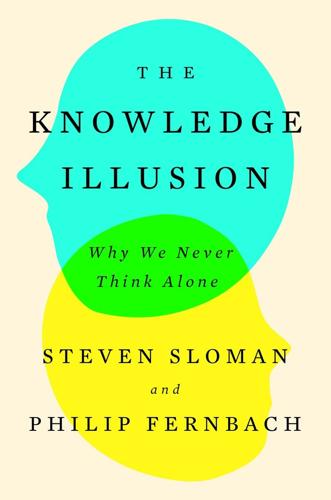
The Knowledge Illusion
by
Steven Sloman
Published 10 Feb 2017
People like Elon Musk, Stephen Hawking, and Bill Gates have cautioned that technology could become so sophisticated that it decides to pursue its own goals rather than the goals of the humans who created it. The reason to worry has been articulated by Vernor Vinge in a 1993 essay entitled “The Coming Technological Singularity,” as well as by Ray Kurzweil in his 2005 book The Singularity Is Near: When Humans Transcend Biology, and most recently by Swedish philosopher Nick Bostrom, who works at the University of Oxford. In Bostrom’s language, the fear is that technology is advancing so fast that the development of a superintelligence is imminent.
…
THINKING WITH TECHNOLOGY commuting a little less: www.governing.com/topics/transportation-infrastructure/how-america-stopped-commuting.html. attendance at movie theaters: www.slashfilm.com/box-office-attendance-hits-lowest-level-five-years. Vernor Vinge: V. Vinge (1993). “The Coming Technological Singularity.” Whole Earth Review, Winter. Ray Kurzweil: R. Kurzweil (2005). The Singularity Is Near: When Humans Transcend Biology. New York: Penguin Books. Nick Bostrom: N. Bostrom (2014). Superintelligence: Paths, Dangers, Strategies. Oxford, UK: Oxford University Press. Ian Tattersall: As told to Dan Falk in the online magazine eon: http://eon.co/magazine/science/was-human-evolution-inevitable-or-a-matter-of-luck.
…
See also artificial intelligence (AI); thought body-brain cooperation in cognitive processing, 101–05 collective mind, 5–6 CRT (Cognitive Reflection Test), 80–84 division of cognitive labor, 14, 109–11, 120–21, 128–29 illusion of understanding, 8, 15 individual limitations, 4–5, 15 Landauer, Thomas, 24–26 the mind compared to a computer, 24–27 moving text window example, 93–95 origins of, 4 Turing, Alan, 25 collaboration, 14, 109–11, 115–18, 121–22, 149–50, 226 collective intelligence hypothesis, 209–10 combinatorial explosion, 34 “The Coming Technological Singularity” (Vinge), 132 communal learning Brown, Ann, 228–30 Fostering Communities of Learners program, 228–30 group/regroup strategy, 228–30 jigsaw method, 229–30 communication language, 113–14 non-verbal, 114–15, 117 community development of, 112–13 intelligence, 259 responsibility, 259–61 community of knowledge, 80, 200, 206–14, 221, 223–27, 241–42 compatibility of different group members’ knowledge, 126 complexity airplane example, 28 beehive example, 107–08, 113–14 car example, 28 chaos theory, 34–35 class reunion example, 31 combinatorial explosion, 34 fractals, 33–34 hairpin example, 34 of the human brain, 29–30 military strategy, 32–33 in the natural world, 29–31 of politics, 16 recognizing, 35 reducing, 250 of technology, 134–35 weather prediction, 30–31 comprehension illusion of, 217–18 inverted text example, 217 Pledge of Allegiance example, 217–18 “Purple Haze” example, 218 computer checkers example of testing intelligence of a team, 210–11 “Computing Machinery and Intelligence” (Turing), 25 consequences of tiny changes.

The Simulation Hypothesis
by
Rizwan Virk
Published 31 Mar 2019
The origins of this use of the term singularity date back to the 1950s, at which time mathematician John von Neumann supposedly coined the term when he said, “The ever-accelerating progress of technology ... gives the appearance of approaching some essential singularity in the history of the race beyond which human affairs, as we know them, could not continue.”17 Irving John Good, another mathematician, was one of the first to call super-intelligent AI the “last invention that man need make.” Of course, there weren’t that many people thinking about the singularity outside of science fiction and a few computer scientists at the time. In fact, the term was popularized by science fiction writer (and computer scientist) Vernor Vinge in a 1993 paper he wrote titled, “The Technological Singularity,” in which he defined it as a “singular point” after which everything will be different. Although the term has picked up steam because of the development of AI to the point of becoming super-intelligent, this is only one of the several possibilities that Vinge puts forth in his original paper: Science may achieve this breakthrough by several means (and this is another reason for having confidence that the event will occur): Computers that are "awake" and superhumanly intelligent may be developed.
…
“IRL” and “AFK,” 209–10 statistical NLP (SNLP), 89–90 statistics, 12 stereoscopy, 57–58 sthula sarira (gross body), 242 subjective reality and quantum physics, 10–13 subject-object duality, end of, 130–31 suksma sarira (subtle body), 242 super-intelligent machines, 276–77 superposition, 133–34 superstrings, 256 supersymmetry, 256 Susskind, Leonard, 179–181 swab, 225–26 Swann, Ingo, 243 synchronicity, 237–241 synchronicity, source of revealing order to physical world, 239 scientific or quantum physics, 238–39 spiritual or religious perspective, 238 T Tantric Buddhism, 284 Tao of Physics (Capra), 203–4 Tap Fish, 3–4 “The Technological Singularity” (Vinge, 1993), 101 Technology Review, 101 Tegmark, Max, 115 telepathy, 244 teleportation, 177–78, 233–34 Telltale Games, 83–84, 83f TensorFlow, 101–2 The Terminator, 96–97, 150 text adventure interface, 28f textual input, 31 Theory of Everything (big TOE), 156–57 theory of general relativity, 259 theory of relativity, 13, 126, 161, 170, 178 theory of special relativity, 169–171 3D (three-dimensional) modeling techniques, 42–44 3D, illusion of, 58 3D films, 57–59 3D films to virtual reality, 58–60 3D glasses, history of, 57–58 3D MMORPGs, 59, 63 3D NPCs, 50 3D objects, 281–82 3D pixels and particles, 164–65 3D printers, 164–65 3D printers and biological materials, 71–72 3D printers, real world rendering, 69–71 3D printing, 67 3D rendering engine, 59 3D sound, 61–62 3D video games, 57–59 “Tic Tac” encounter, 233 Tic Tac Toe, 2, 11–12, 33, 104 Tifft, William G., 175 time simulation, 175–76 time travelers, 274–75 Tonegawa, Susumu, 79 Total Recall, 77–78 Toy Story, 64, 164 trackballs, 36 transmigration, 201 Treasure Hunt (Virk), 237–241 Tsongkhapa, 198 tulku, 203 Turing, Alan, 84–85, 104 Turing Test, 17, 84–85, 84f, 88–94, 99, 101, 114–16, 280 twin paradox, 169 Twitchell, Paul, 204, 207 Twitter, 98 2D (two-dimensional) modeling techniques, 42–44, 53 Tyson, Neil DeGrasse, 10, 113 U UFOs (unidentified flying objects), 219, 231–35 Ultima, 82 Ultima I-III, 39, 42 Ultima Online, 4, 42, 44 uncertainiy principle, 132 “unexplained” phenomena, 241–44 unfolding symmetry, 263 universal “server” time, 173 universe as information, 157 user-generated content, 50 V Vallée, Jacques, 232, 234, 239 “value” of pixel, 163 “values of AI,” 99 Vedas, 186–87, 242, 284 The Verge, 91 video game console, 38–39 video games multiple lives, 200–201 and quantum indeterminacy (QI), 124, 134–35 theoretical model for reincarnation, 205–8 . see also Great Simulation; simulation hypothesis; simulation point video games, conditional rendering in 3D virtual world rendering, 136–38 complex maps in 2D worlds, 135–36 multiplayer and VR rendering, 138–39 rendering engine rules, 138 video games, features of multiple lives, role playing, 208–9 quests and achievements, 210–11 states of play: “in-world” vs.
…
. [←14] https://commons.wikimedia.org/wiki/File:Sophia_at_the_AI_for_Good_Global_Summit_2018_(27254369347).jpg [←15] https://www.theverge.com/2017/11/10/16617092/sophia-the-robot-citizen-ai-hanson-robotics-ben-goertzel [←16] https://en.wikipedia.org/wiki/Three_Laws_of_Robotics [←17] Ray Kurzweil, The Singularity Is Near, (New York: Penguin, 2005), 10. [←18] Vernor Vinge, “Technological Singularity” (1993), https://www.frc.ri.cmu.edu/~hpm/book98/com.ch1/vinge.singularity.html [←19] https://www.technologyreview.com/s/612257/digital-version-after-death/ [←20] Nick Bostrom, “Are You Living in a Computer Simulation?” Philosophical Quarterly (2003) Vol.53, No.211, pp.243‐255. [←21] Max Tegmark, Life 3.0: Being Human in the Age of Artificial Intelligence (New York: Alfred A.
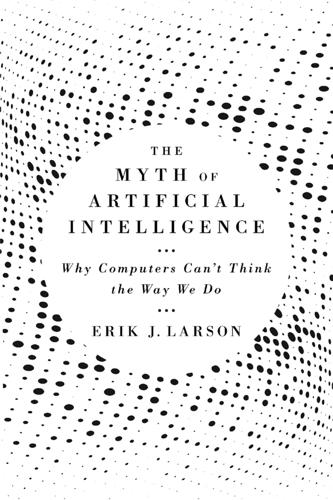
The Myth of Artificial Intelligence: Why Computers Can't Think the Way We Do
by
Erik J. Larson
Published 5 Apr 2021
Our inability to fix a workable definition of intelligence (let alone superintelligence) might suggest that the endpoint futurists see as inevitable in AI is actually confused, and yet another simplification that provides ample room for mythology and speculation. 8. Russell, Human Compatible, 7–8. Chapter 4: The Singularity, Then and Now 1. Murray Shanahan, The Technological Singularity (Cambridge, MA: MIT Press, 2015), 233. 2. As we’ve seen, the science of Turing’s universal machines was well established by the late 1930s. Computers as electronic devices appeared later, on the heels of developments of communications technologies such as relay switches from telephone systems and other technologies. 3.
…
Technically, Vinge introduced the term singularity three years earlier, in a January 1983 article in Omni magazine titled “First Word.” It is common, however, to trace the word and Vinge’s use of it back to his sci-fi book Marooned in Realtime, where the concept was fully developed in the plot of the story. 4. Vernor Vinge, “The Coming Technological Singularity: How to Survive in the Post-Human Era,” in Vision-21: Interdisciplinary Science and Engineering in the Era of Cyberspace, ed. G. A. Landis, NASA Publication CP-10129, 1993, 11–22. 5. Ray Kurzweil, The Singularity is Near: When Humans Transcend Biology (New York: Penguin Group, 2005). 6.
…
F., 68, 69 social change, 44–45 social intelligence, 26–28 social networks, 220 soundness, 109 Soviet Union, 60–61 spam, classifying, 134–135 speech-driven virtual assistance applications, 227 supercomputers, 249, 250, 276–277 superintelligence, 39; Bostrom on, 34, 81; Kelly on, 285–286n7; Kurzweil’s prediction for, 47; Russell on, 80–82 supervised learning, 133, 134; text classification as, 136–137 Surowiecki, James, 244 swarm intelligence, 245–247 Swift, Jonathan, 232, 272, 273 syllogisms, 106–107, 171 syntax, 206–207 Szilard, Leo, 43 Taleb, Nassim Nicholas, 129–130 Talk to Books (Google), 228 Tay (Microsoft chatbot), 229 technology: change in, 44–45; evolution of, 41–42; in kitch, 61–63; Law of Accelerated Returns on, 47–48, 67; of Web 2.0, 240–241 technoscience, 63–67, 287n1 Tesla, Nikola, 97 Tetlock, Philip, 69 text classification, 135–137 Text REtrieval Conferences competitions, 221 theory: big data versus, 145, 243; in neuroscience, 255–259, 261–262; overfitting over data, 259–261 Thiel, Peter, 269, 275–276 thinking, 184–186 time-series prediction, 137 Tolstoy, Leo, 70 translation of natural language, 48, 52–54, 201–202; continued problems with, 56–57; noisy channel approach to, 56 Turing, Alan, 3, 9–10, 62, 192, 239, 245–247, 270; challenge made by, 49, 51; chess interest of, 19–20; on common sense, 131; on computers thinking, 102–103; on decidability of mathematics, 15–16; on Gödel, 16–18; on human intelligence, 23; on humans as black boxes, 68; on initiative in machines, 233–234; on intelligence, 27–32; on machine learning, 156; on typewriters, 187–188; on understanding language, 207–208; World War II code breaking by, 21–22, 24, 26 Turing machines, 16, 17 Turing test, 18, 57–59, 105; Goostman’s passing of, 191–194; Kurzweil on, 79; monologue variation on, 194–195, 212–214; opposition to, 77; Turing’s invention of, 9–10, 49, 51; Winograd schemas as variation on, 195–203 typewriters, 187–188 Ulam, Stanislaw, 44–46 ultraintelligence, 33, 62 The Unbearable Lightness of Being (novel, Kundera), 60 Unstructured Information Management Architecture (UIMA), 224 unsupervised learning, 133, 137 Venn, John, 232 Vinge, Vernor, 46, 286n3 Voltaire, 277 Von Neumann, John, 36–37, 44, 239; technological singularity theorized by, 45–46, 65–66 Walmart Labs (firm), 144, 210 Ward, Jonathan Stuart, 143 Watson (AI system), 28, 221–226, 230–231 Webb, Charles Henry, 232 Weiss, Paul, 95 Weizenbaum, Joseph, 58 Welchman, Gordon, 24 Whitehead, Alfred North, 110 Wiener, Norbert, 269–275 Wikipedia, 225, 226, 241 Winograd, Terry, 58, 195, 201 Winograd schemas, 195–203, 210–212, 216–218, 296n4, 296n7 World War II, code breaking during, 20–26 World Wide Web, 55–56; Web 2.0, 240–242 Yong, Ed, 247 Zeus (mythical), 237–238
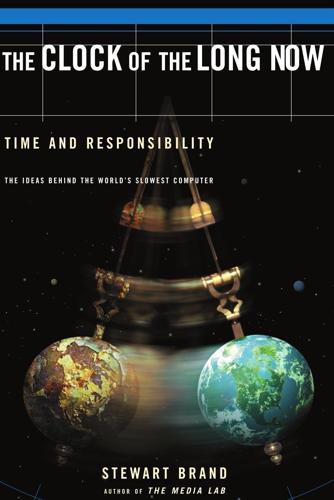
Clock of the Long Now
by
Stewart Brand
Published 1 Jan 1999
Vinge himself sees the tipping point as the moment when machine intelligence, or machine-enhanced intelligence, surpasses normal human intelligence and takes over its own further progress. Another possibility is some emergent property of the all-embracing Internet, which Vinge proposes might “suddenly awaken.” Any such occurrence would indeed transform our world. Whether or not it will actually occur, the mere prospect of a technological Singularity changes behavior. People already refer to the near future in months instead of years, and to the distant future in years instead of decades or centuries. What may happen decades from now—beyond the imagined event horizon—is treated as not only unknown but unknowable. Under such conditions speed becomes glorified.
…
So it went for five centuries, until suddenly in the mid twelfth century the lead was taken over by the new universities in reviving cities such as Paris, Bologna, and Oxford. Urban universities have kept the intellectual lead ever since (though the Net may be challenging that). Future dark ages are always possible. The technological Singularity could generate one—what if whatever we transition to doesn’t work out? Contemplating the need for bridging gaps in civilization, the dreamers of a millennial Clock/Library assumed from the beginning that it would be built in a remote desert site. Forests, shorelines, and cities suffer too rapid a physical turnover to be good candidates.

On the Edge: The Art of Risking Everything
by
Nate Silver
Published 12 Aug 2024
Before we get back to SBF, there’s one more strand of the broader EA/rationalist movement that I’ve been late in introducing. That is a futurist strand, often in the form of transhumanism—the idea that our species will eventually transcend the human body through technological augmentation, possibly in the form of a technological singularity in which the world economy will experience an exceptionally rapid, exponential rate of growth. This stuff really can sometimes sound like science fiction, like in Hanson’s book The Age of Em, which imagines artificial emulations (ems) of human brains: While some ems work in robotic bodies, most work and play in virtual reality.
…
For roughly the past twelve thousand years, we have been in the Holocene, the geological epoch defined not by the origin of Homo sapiens per se but by humans becoming the dominant species and beginning to alter the shape of the Earth with our technologies. AI wresting control of this dominant position from humans would qualify as a 10, as would other forms of a “technological singularity,” a term popularized by the computer scientist Ray Kurzweil[*37] (who now works on AI for Google) to refer to “a future period during which the pace of technological change will be so rapid, its impact so deep, that human life will be irreversibly transformed.” Where does AI belong on this scale?
…
And the 2010s and the 2020s look more promising than the aughts between the AI transformer, gene-editing technologies like CRISPR, and even pharmaceuticals like semaglutide.[*5] So I do not mean to suggest that progress has ended; the world is still growing and changing. But at the very least, we do not appear to be on the verge of some sort of technological singularity. In fact, we may have come to take progress for granted. “Generating progress is abnormal,” said Patrick Collison, the cofounder of Stripe, who has advocated for the foundation of a field he calls “progress studies,” a multidisciplinary approach toward understanding improvement in the human condition.
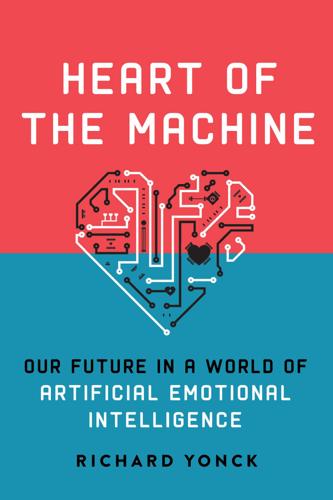
Heart of the Machine: Our Future in a World of Artificial Emotional Intelligence
by
Richard Yonck
Published 7 Mar 2017
He called this event the “Singularity” because of its supposed similarity to a physical singularity—or black hole.8 Proponents of the concept maintain that as with a physical singularity, conditions would be so severely different beyond its horizon that it’s impossible to predict what the world would be like afterward. Whether or not such an event is feasible, authors have been happy to explore the infinite possibilities that arise from its contemplation. This “technological singularity” offers tremendous opportunity to speculate about our place in a world where we are no longer the most intelligent beings on the planet. Some writers speculate that as a result, we may find the human race wiped out. This idea has also recently been written about by some very serious thinkers and technologists, as we’ll also discover in chapter 17.
…
The damsel in distress is also a feature of sadomasochistic fetishes, an aspect the AIs may have been manipulating in Nathan from before the beginning of this story. 8. The term “singularity” was originally used in this sense by Stanislaw Ulam in his obituary of computing giant John von Neumann. Chapter 17 1. The first two terms refer to the apocalyptic dystopia of the Terminator franchise, created by James Cameron and Gale Anne Hurd. The technological singularity is a hypothetical moment in our future when a machine intelligence rapidly self-improves, surpassing all human intelligence and severely disrupts all of society. The robot apocalypse is an oft-used science fiction trope. 2. Here, I’m applying Occam’s Razor. As complex as questions about different aspects of consciousness may be, the idea that we evolved five or eight independent varieties leaves me incredulous. 3.
…
See transcranial direct current stimulation (tDCS) technium, 23 technological evolution “AI-human symbiote,” 264 emotional empathy and, 265–266 and “ end of the world” scenarios, 261–262 and the future, 266–273 intention, 260–261 Matrix scenario, 262–263 peaceful coexistence, 263 technological singularity, 239 technophobia, 29–30 TEDWomen, 175–176 Tega, 118–119 Tegmark, Max, 132 teledildonic devices, 188–189 telepresence, 201 telepresence robots, 151 Terminator scenarios, 242, 262 Terror Management Theory (TMT), 99 Terrorist Surveillance Act (2006), 145 Texas A&M, 127 theory of mind (ToM), 83–84, 131 therapeutic companion robots, 148–150 “Three Laws of Robotics,” 165, 230–233, 262 3D printing, 211 Tilbury, Nancy, 57 TMS.

Ghost Road: Beyond the Driverless Car
by
Anthony M. Townsend
Published 15 Jun 2020
Ann Arbor, MLive, October 6, 2017, https://www.mlive.com/news/ann-arbor/index.ssf/2017/10/can_ self-driving_pizza_deliver.html. 231“classified [Elaine Herzberg] as something other”: Ryan Felton, “Video Shows Driver in Autonomous Uber Was Looking Down Moments before Fatal Crash,” Jalopnik, March 21, 2018, https://jalopnik.com/video-shows-driver-in-fatal-autonomous-uber-crash-was-l-1823970417. 231computer-vision algorithms: Katyanna Quach, “Racist Self-Driving Scare Debunked, inside AI Black Boxes, Google Helps Folks Go with TensorFlow,” The Register, March 10, 2019, https://www.theregister.co.uk/2019/03/10/ai_ roundup_080319/. 231marking of pavement to help orient drivers: Bill Loomis, “1900–1930: The Years of Driving Dangerously,” Detroit News, April 26, 2015, https://www.detroitnews.com/story/news/local/michigan-history/2015/04/26/auto-traffic-history-detroit/26312107/. 232dinged for excessive idling: Andrew Small, “CityLab Daily: The Race to Code the Curb,” CityLab, April 2, 2019, https://www.citylab.com/authors/andrew-small/. 233“cities need to invest in the mapping in ways”: Kevin Webb (@kvnwebb), “We’re building smart ways to encode information like curb regulation,” Twitter, November 30, 2018, 1:41 a.m., https://twitter.com/kvnweb/status/1068485225607585798. 234“an exponential runaway beyond”: Vernor Vinge, “The Coming Technological Singularity: How to Survive in the Post-Human Era,” VISION-21 Symposium, NASA Lewis Research Center and Ohio Aerospace Institute, March 30–31, 1993, https://edoras.sdsu.edu/~vinge/misc/singularity.html. 234John von Neumann had raised: John Brockman, Possible Minds (New York: Penguin Press, 2019), 8. 234“AI enthusiasts have been making claims”: Vinge, “The Coming Technological Singularity.” 234“I have set the date 2045”: Christianna Reddy, “Kurzweil Claims That the Singularity Will Happen by 2045,” Futurism, October 5, 2017, https://futurism.com/kurzweil-claims-that-the-singularity-will-happen-by-2045/. 235“machine learning” to disguise the true nature: Chris Smith et al., “The History of Artificial Intelligence,” University of Washington, December 2006, https://courses.cs.washington.edu/courses/csep590/06au/projects/his tory-ai.pdf. 235“a deep level of understanding”: Rodney Brooks, “Post: [For&AI] The Origins of Artificial Intelligence,” Robots, AI, and Other Stuff (blog), April 27, 2018, https://rodneybrooks.com/forai-the-origins-of-artificial-intelligence/. 235“Contemporary neural networks do well on challenges”: Gary Marcus, “Deep Learning: A Critical Appraisal,” New York University, accessed January 22, 2019, https://arxiv.org/pdf/1801.00631.pdf. 236“If . . . driverless cars should also disappoint”: Marcus, “Deep Learning.” 236Frey tallied his predictions of the jobs: Carl Benedikt Frey and Michael A.
…
And while his assertion sounded like the plot for a dystopian novel, many geeks and gurus welcomed the possibility of machines with superhuman intelligence. In the age of the Human Genome Project and climate modeling, the great challenges facing humanity were better seen as informational problems, they argued. All would yield before the awesome number-crunching machines to come. In recent years, however, the technological Singularity has fallen behind its original schedule. It’s behaving quite unlike its cosmological namesake—the point deep inside a black hole where the strength of its gravitational field soars toward infinity. Instead, the Singularity seems to recede more the nearer we draw. Vinge’s estimate placed the event sometime between 2005 and 2030.

Boom: Bubbles and the End of Stagnation
by
Byrne Hobart
and
Tobias Huber
Published 29 Oct 2024
Even more radically, in the words of CCRU, the pseudonymous collective that coined the term “hyperstition,” “because the future is a fiction, it has a more intense reality than either the present or the past.” 347 One of the disquieting implications of such a messianic futurism is that the future has the capacity to affect the present. Or, in the unsettling words of philosopher Nick Land, “the effect of singularity—the causal origin—is futural and not historical.” 348 The unorthodox idea that hyperstitions of the future such as the technological singularity, messianic resurrection, or the advent of hyperbitcoinization might causally affect the present gives new meaning to the famous (and possibly apocryphal) statement of cyberpunk writer William Gibson: “The future is already here—it’s just not very evenly distributed.” The collapse of the present and the future that occurs in a bubble might also explain the messianic zeal of many bubble believers—they’re driven by a prophetic vision of the future that they want to help realize technologically. 349 Echoing Hebrew 11:1, they have a “conviction of things not seen.”
…
Sinsheimer, The Strands of Life (Berkeley, University of California Press, 1994), 287. 385 Noble, The Religion of Technology, 195. 386 When asked whether he believes that God exists, the preeminent transhumanist Ray Kurzweil replied, “Not yet,” implying that the development of artificial general intelligence represents the active building toward a god. John Rennie, “The Immortal Ambitions of Ray Kurzweil: A Review of Transcendent Man,” Scientific American, February 15, 2011, https://www.scientificamerican.com/article/the-immortal-ambitions-of-ray-kurzweil/. 387 Vernor Vinge, “The Coming Technological Singularity: How to Survive in the Post-Human Era,” VISION-21 Symposium, March 30–31, 1993, https://edoras.sdsu.edu/~vinge/misc/singularity.html; Kurzweil, The Age of Spiritual Machines; Kurzweil, The Singularity Is Near. 388 Echoing John’s apocalyptic vision in Revelation 21:4 of a New Jerusalem descending from Heaven in which “there will be no more death or sorrow or crying or pain,” the singularity, according to its believers, will “wipe away all tears from their eyes; and there shall be no more death.”
…
Thiel, Peter, and Blake Masters. Zero to One: Notes on Startups, or How to Build the Future. New York: Crown Business, 2014. Tipler, Frank J. The Physics of Immortality: Modern Cosmology, God, and the Resurrection of the Dead. New York: Doubleday, 1994. Vinge, Vernor. “The Coming Technological Singularity: How to Survive in the Post-Human Era.” Article for the VISION-21 Symposium sponsored by NASA Lewis Research Center and the Ohio Aerospace Institute, March 30-31, 1993. https://edoras.sdsu.edu/~vinge/misc/singularity.html. Max Weber. The Protestant Ethic and the “Spirit” of Capitalism and Other Writings.
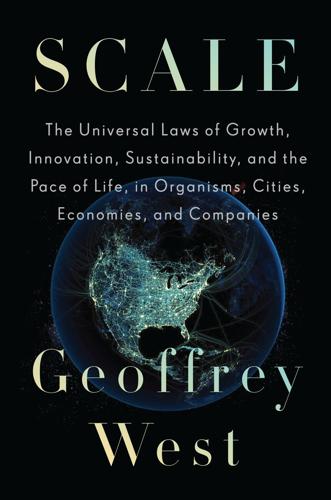
Scale: The Universal Laws of Growth, Innovation, Sustainability, and the Pace of Life in Organisms, Cities, Economies, and Companies
by
Geoffrey West
Published 15 May 2017
Its most famous popular consequence was the concept of black holes, which arose from trying to understand the singularity structure of Einstein’s theory of general relativity. Until it was popularized by Kurzweil in his 2005 book The Singularity Is Near: When Humans Transcend Biology, “singularity” was a term that was hardly used colloquially. Building on an earlier idea of a “technological singularity” introduced in 1993 by the science-fiction writer and computer scientist Vernor Vinge, Kurzweil proposed that we are approaching a singularity in which our bodies and brains will be augmented by genetic alterations, nanotechnology, and artificial intelligence to become hybrid cyborgs no longer bound by the constraints of biology.
…
Arthur, The Nature of Technology: What It Is and How It Evolves (New York: Free Press, 2009); H. Youn, et al., “Invention as a Combinatorial Process: Evidence from U.S. Patents,” Journal of the Royal Society Interface 12 (2015): 20150272. 5. R. Kurzweil, The Singularity Is Near: When Humans Transcend Biology (New York: Viking, 2005). 6. V. Vinge, “The Coming Technological Singularity: How to Survive in the Post-Human Era,” Whole Earth Review (1993). 7. This is quoted by the great mathematician Stanislaw Ulam in a eulogy to von Neumann following his death in 1957: “Tribute to John von Neumann,” Bulletin of the American Mathematical Society 5(3), part 2 (1958): 64. 8.
…
See also quarter-power scaling networks and origins of quarter-power allometric scaling, 103–5 ¾ power, 25–27, 93, 155, 458n universality and the magic number four, 93–99 scaling of cities, 28–32, 271–81, 341–42 between different urban systems, 279 metrics, 271–75, 276–77, 279–80 physical infrastructure, 274–75 scaling curves, 276–77, 280 scaling of companies, 32–33, 385–92, 408 “scattering experiments,” 78 “scattering theory,” 78 Schläpfer, Markus, 352 Schrödinger, Erwin, 84 Science (journal), 54, 302–3, 436 science of cities, 7, 8–9, 215, 269–324 christalls vs. fractals, 288–95 cities as social incubators, 295–304 consequences and predictions, 325–78 Dunbar and numbers, 304–9 integrating social with physical, 315–24 scaling of cities, 271–81 social networks and cities, 281–88 Zipf and word use, 309–15 science of companies, 7, 8–9, 32–33, 379–410 company mortality, 393–410 myth of open-ended growth, 391–93 science of complexity, 23, 79–81 science of materials, 39–42 science of wars, 132–35 scientific method and theory, 48, 106–11, 181, 441–42 Seaborg, Glenn, 243 Seattle, 248, 261, 360 Second Law of Thermodynamics, 14, 71, 233, 236, 237 “second order,” 110 seismometers, 46 self-interest and greed, 286–88 self-organization, 23, 282–83 self-similarity, 91–93, 128, 155 origin of magic number four and, 126–30 Senseable City Lab, 340 Seventh Seal, The (film), 179–80 Shahnameh (Ferdowsi), 218–19 Shakespeare, William, 63, 252–53 Shanghai Stock Exchange, 389–90, 390 Shaw, George Bernard, 226 shipbuilding, 63, 66–75, 177 Shuman, Frank, 241 Silicon Valley, 248–49, 265, 358, 359–60, 432, 442, 447 similitude, 75–78 Simon, Herbert, 369–70, 382 Simon, Julian, 232–33 simplicity underlying complexity, 90–93, 116 Singapore, 354 singularity, 422. See also finite-time singularity; technological singularity Singularity Is Near, The (Kurzweil), 422 Sisyphus, 418, 423, 424 “six degrees of separation,” 296–97, 301, 304–5 sleep, 6, 12 “slum clearance,” 260, 261, 263 “small world problem,” 296–97, 302–4, 305 smart cities, 270, 294, 338, 346 Smith, Adam, 380 social brain hypothesis, 308–9, 315–16 social capital, 278, 286, 372, 392 Social Darwinism, 287 social incubators, cities as, 295–304 social media, 332, 340 social metabolic rate, 13 social metabolism, 13, 373–74, 415 social networks, 344–45 cities and, 281–88, 295–304, 326–27 Dunbar and numbers, 304–9 impedance matching, 123 integrating physical infrastructure with, 315–24 social physics, 56–57 socioeconomic diversity and business activity, 363–71, 367 “socioeconomic space,” 285 socioeconomic time, 326–32 solar energy, 236, 240–42 solar system, 37, 108–9 Sornette, Didier, 415, 418, 425 Soros, George, 364 South African coast, 140, 144 space filling, 27, 112–13, 129, 201, 284 Spinoza, Baruch, 172 sports rankings, 352–53 square-cube law, 39–42, 43, 58, 59, 158–59 standardized measures, 76 Standard Model of particle physics, 338–39 standard of living, 184, 185–86, 229, 234–35 Standard & Poor’s, 385, 404 Stanford University, 265, 301, 303, 329–30, 361, 435–36 steam engines, 69 Stevenage, 263–65, 267 Stewart, Potter, 20 stock markets, 142, 144, 389–90 Stokes, George, 71 stone arch bridges, 61 strength of materials, 42–45 string theory, 85, 130, 225, 429 Strogatz, Steven, 297–98, 300–301 structuralism, 87 Strumsky, Debbie, 356, 364 Strutt, Edward, 78 Strutt & Parker, 78 sublinear scaling, 19, 28, 173, 374, 412–13 cities, 272, 273, 274–75, 288, 295, 321, 372, 374–75, 388 companies, 391–92, 408 patents, 2, 2n, 4, 29, 276, 357, 386 Sumatra earthquake of 2010, 46 supercentenarians, 188–89, 191 Superconducting Super Collider (SSC), 82–83 superexponential growth, 413–14, 414, 417 superlinear scaling, 18, 19, 29, 374 cities, 275–76, 280, 304, 318, 319, 321, 326–27, 342, 355–56, 370, 374, 391–92 companies, 408, 413–14, 414 Superman, 43–45, 44, 161 survival analysis, 402–3, 405–6 “survival of the fittest,” 87, 89, 403 survivorship curves companies, 397, 398–400, 400–402 human, 189–94, 191, 192 Swift, Jonathan, 128 Swiss Federal Institute of Technology, 271 Sydney Opera House, 259 Szell, Michael, 352 Takamatsu Corporation, 406 Taleb, Nassim, 383 Tange, Kenzo, 248, 258 Taylor Walker (London), 224–26 technological singularity, 28–32, 420, 422, 424 telescopes, 37 temperature, 20–21, 109 exponential scaling of, 173–78 extending life span and, 203–4 temperature dependence of life span, 175, 176, 177, 203–4 temperature rise, 237 terminal units, 113–14, 151, 201–2, 284 terrorist attacks, 134 Tesla, Inc., 124, 403–4 Tesla, Nikola, 123–24 Texas, flow of transport, 292–94, 293 Thames Tunnel, 64 Theory of Everything (ToE), 429–30, 444 theory of relativity, 107–8, 115, 339, 422, 428, 429 thermodynamics, 14, 69, 71, 233, 236, 237 Thiel, Peter, 184 Thomas, Warren, 52–53 Thomas Edison Company, 123–24 Thompson, D’Arcy Wentworth, 86–88, 97, 111, 181 ¾ power scaling law, 25–27, 93, 155, 458n time dilation, 332 tipping points, 16, 24, 157–58, 382, 463n total market capitalization, 379, 389–90, 390 Tottenham Hotspur, 187 “Toward a Metabolic Theory of Ecology” (Brown, Savage, Allen, Gillooly), 174 “toy model,” 109 traffic flows, 292–94 traffic gridlock, 332–33 transaction costs, 380, 381 transportation time, 332–35 travel time, 329–30, 332–35, 346–47 treadmills, 328, 412, 418 Treatise on Man (Quetelet), 56 trees, 116–17, 121, 121–22, 172, 459–60n scaling exponents, 147, 150, 150–51 trial and error, 69–71, 74–75 Triumph of the City, The (Glaeser), 213 tumors, 6, 15, 27, 172 growth curves, 170, 171 turbulence, 72 Tusko (elephant), 53 Twitter, 296, 332, 340, 447 Two New Sciences (Galileo), 38–42 Tycho Brahe, 439 Tyrannosaurus rex, 159 UCLA School of Medicine, 205 Ultimate Resource, The (Simon), 232–33 United Nations Millennium Development Goals, 230–31 unit of length, 135–37 universality concept of, 76–77 magic number four and, 93–99 “universal laws of life,” 81, 87 universal time, 423–24 University of Modena, 249 University of New Mexico (UNM), 105, 106 urbanization, 6–7, 8–10, 214–15, 223–26 global sustainability and, 28–32, 213–15 life span and, 184–85, 191, 192–93 Urbanocene, 212, 214–15, 236, 262 urban overload, 303–4 urban planning and design, 253–58, 261–67, 290, 294–95 urban psychology, 302–4 urban renewal, 260, 261, 263 urban sociology, 266 Utzon, Jørn, 259 van der Leeuw, Sander, 249–50 van Gogh, Vincent, 189 variational principle, 115–16 Vasa (ship), 70, 459n Vinge, Vernor, 422 von Neumann, John, 424 wages in cities, 30, 275, 276, 278, 281, 285–86 Walford, Roy, 205–6, 207 walking pace, 334, 335–36, 336 Wallace, Alfred Russel, 89, 228 Walmart, 32, 388–89, 394 wars, mathematical analysis of, 132–35 washing machine, 152–53 Washington, D.C., 266–67 Washington Square (New York City), 260, 261 water supply, 360–63 Watson, James, 84, 437 watts (W), 457n Watts, Duncan, 297–98, 300–301 wave theory of light, 126 wealth creation and ranking of cities, 355–59 “wear and tear,” 15, 88, 199–200 decline of body functions with age, 195, 197, 201, 202 weight lifting, 48–51, 50, 352–53 Welwyn Garden City, 255 West, Jacqueline, 187, 317 West, Louis, 52–53 whales, 3, 5, 16, 27, 80, 90–91, 92, 155, 159–60.

Wired for War: The Robotics Revolution and Conflict in the 21st Century
by
P. W. Singer
Published 1 Jan 2010
Singer, December 7, 2006. 103 “the laws of science and our ability” As quoted in Garreau, Radical Evolution, 72. 103 “Google all the time” Peter Moon, “AI Will Surpass Human Intelligence After 2020,” TTworld.com, May 3, 2007 (cited May 30, 2007); available at http://www.itworld.com/Tech/3494/070503ai2020/. 103 “the Internet-based cognitive tools” Vernor Vinge, Rainbows End (New York: Tor Books, 2006), 5. 103 “The Coming Technological Singularity” Vernor Vinge, “The Coming Technological Singularity: How to Survive in the Post-Human Era” (paper presented at the VISION-21 Symposium, March 30-31, 1993). 103 “within thirty years” Ibid. 103 “point where our old models” Ibid. 104 “We are on the edge of change” Vinge, as quoted in Garreau, Radical Evolution, 71-72. 104 “It’s a future period” Kurzweil, The Singularity Is Near, 7. 104 “It’s not merely a technology” Robert Epstein, interview, Peter W.
…
Vinge doesn’t dedicate the book to his wife or parents or cat. Instead, perhaps sucking up to our future owners, he dedicates it to “the Internet-based cognitive tools that are changing our lives—Wikipedia, Google, eBay, and the others of their kind, now and in the future.” In 1993, Vinge authored a seminal essay. The title he chose, “The Coming Technological Singularity: How to Survive in the Post-Human Era,” pretty much says it all. Vinge described the ongoing explosion in computing power and projected that “within thirty years, we will have the technological means to create superhuman intelligence. Shortly thereafter, the human era will be ended.” Once superhuman intelligence gets involved, argued Vinge, the pace of technological development would accelerate even further than the doubling we have gone through for the last generations.
…
Singer, December 7, 2006. 103 “the laws of science and our ability” As quoted in Garreau, Radical Evolution, 72. 103 “Google all the time” Peter Moon, “AI Will Surpass Human Intelligence After 2020,” TTworld.com, May 3, 2007 (cited May 30, 2007); available at http://www.itworld.com/Tech/3494/070503ai2020/. 103 “the Internet-based cognitive tools” Vernor Vinge, Rainbows End (New York: Tor Books, 2006), 5. 103 “The Coming Technological Singularity” Vernor Vinge, “The Coming Technological Singularity: How to Survive in the Post-Human Era” (paper presented at the VISION-21 Symposium, March 30-31, 1993). 103 “within thirty years” Ibid. 103 “point where our old models” Ibid. 104 “We are on the edge of change” Vinge, as quoted in Garreau, Radical Evolution, 71-72. 104 “It’s a future period” Kurzweil, The Singularity Is Near, 7. 104 “It’s not merely a technology” Robert Epstein, interview, Peter W. Singer, Washington, DC, October 25, 2006. 104 “fits many of our happiest dreams” Vinge, “The Coming Technological Singularity: How to Survive in the Post-Human Era.” 104 “physical extinction of the human race” Ibid. 104 “the very nature of what it means to be human” “About the Book,” Singularity.com (cited May 29, 2007); available at http://singularity.com/aboutthebook.html. 105 “the non-biological intelligence” Kurzweil, The Singularity Is Near, 136. 105 “The Rapture for Nerds” Charles Stross, “Singularity: A Tough Guide to the Rapture of the Nerds,” 2005 (cited January 28, 2008); available at http://www.antipope.org/charlie/toughguide.html. 105 “By 2030 we are likely to” Bill Joy, “Forfeiting the Future,” Resurgence, no. 208 (2001), http://www.resurgence.org/resurgence /issues /joy208.htm. 105 “By the way, Joy’s thesis is spot-on” Special forces officer, interview, Peter W.
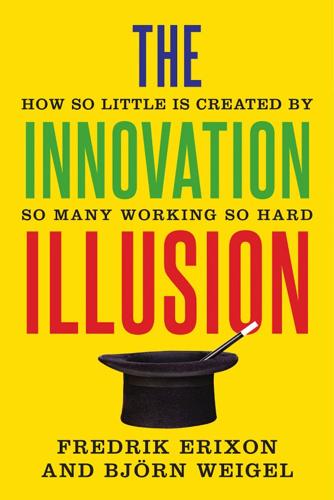
The Innovation Illusion: How So Little Is Created by So Many Working So Hard
by
Fredrik Erixon
and
Bjorn Weigel
Published 3 Oct 2016
Experts quarrel about the exact date, but in a few decades they say we will reach the point of technological singularity. That is when artificial intelligence (AI) will outsmart human intelligence. Robots will then not just beat us at chess but recursively improve themselves and constantly develop their own skills in a way that humans can no longer control. Artificial intelligence will represent an intelligence that the best human brains of this world cannot even fathom. “Man is something that shall be overcome,” declared Friedrich Nietzsche, and that pledge now seems closer to reality than ever before.10 Technological singularity is therefore the point of no return for the human species – at least if you believe some technology dystopias.
…
(i) Taleb, Nassim Nicholas, “Soviet–Harvard illusion” (The Black Swan) (i) tax havens (i) taxes and debt vs. equity financing (i), (ii) and labor (i) and policy uncertainty (i) in Sweden (i) taxi services and driverless cars debate (i) and regulation (i) tech entrepreneurs (i) tech incubators (i) technofeudal society (i) technological platforms, and regulation (i) technological singularity (i) technological unemployment (i), (ii) technology and capitalism (i) dystopian visions of (i) and economy (i), (ii), (iii) and employment (i) and French dirigisme (i) and innovation success (i), (ii), (iii), (iv) and “scientific civilization” thinking (i) technology angst vs. technology frustration (i) technology blitz theory (i), (ii), (iii), (iv) and vertical specialization (i) see also artificial intelligence; automation; diffusion; innovation; New Machine Age thesis; robotics/robots technostructure (i), (ii), (iii), (iv) telecommunications and deregulation (i) and globalization (i) and investment (i) see also Ericsson telephone (i), (ii) see also mobile phones/technology; smartphones Teles, Steven (i) Teller, Astro (i) 1066 and All That (Sellar and Yeatman) (i) Tesla (i) Texas, Special/Permanent School Fund (i) TFP (total factor productivity) growth (i), (ii), (iii) Thiel, Peter (i), (ii) Thomson, George (i) Tiberius (i) Time magazine, “The Committee to Save the World” (i) TNT, attempted acquisition of by UPS (i) total factor productivity (TFP) growth (i), (ii), (iii) Toynbee, Arnold (i), (ii) trade interfirm vs. intrafirm trade (i) see also global trade; mercantilism; protectionism transaction costs (i), (ii), (iii), (iv), (v), (vi) transmission costs (i), (ii), (iii) transparency Linaburg Maduell Transparency Index (LMTI) (i) and regulation (i), (ii) and sovereign wealth funds (i), (ii) Transparency International (i) “triple helix” models (i) “triple revolution” (i) trucking industry (US), shortages of drivers (i) Trump, Donald (i), (ii) Tufts Center for the Study of Drug Development (i), (ii) Tullock, Gordon (i) Twitter, and Nobel Peace Prize (i) Uber (i), (ii), (iii) unbundling of production first (i) second (i), (ii), (iii), (iv) uncertainty and compliance officers (i), (ii) and entrepreneurship (i) and financial regulation (i) and globalist worldview (i), (ii) market uncertainty (i), (ii) policy uncertainty (i), (ii) and probabilistic approach (i), (ii) and risk (i), (ii) and strategy (i) see also predictability; regulatory complexity/uncertainty; volatility unemployment and decoupling (productivity/wages) thesis (i) and Great Recession (i) and New Machine Age hype (i) and productivity (i) technological unemployment (i), (ii) see also labor unicorns (firms) (i) United Kingdom (UK) “boom and bust” and Gordon Brown (i) business investment: declining trend (i); as a proportion of GDP (i) corporate net lending (i), (ii) corporate profit margins (1948–2014) (i), (ii) dependence on larger enterprises (i) EU Leave campaign and older generation (i) exports to China (i) financialization of real economy (i) and globalization (i), (ii), (iii) income inequality and generations (i) “Independent Review of UK Economic Statistics” (Charles Bean) (i) London Stock Exchange and sovereign wealth funds (i) managerialism (i) Middle Ages economy (i) pension deficits (i) pensioners vs. working-age households incomes (i) productivity and incomes (i) productivity puzzle (i) R&D spending (i) retirement savings (i) United States (US) academia and speech codes (i) American Financial Stability Oversight Council (i) banks: and compliance officers (i); and financial regulations (i) Blue Ribbon Commission (i) Burning Man festival (Nevada) (i) capital expenditure (capex) (i)n39 car industry: driverless cars (i); and environment-related regulations (i); and lean production (i) Code of Federal Regulations (i) Consumer Protection Act (i) corporate cash hoarding (i) corporate net lending (i), (ii) corporate profit margins (1948–2014) (i), (ii) corporate renewal levels (i) corporate retained earnings figures (i) corporations’ decline (1980s) (i) debt vs. equity (i) diffusion of innovations (i) dockers and containerization (i) Dodd–Frank Act (i), (ii), (iii), (iv) Energy Policy and Conservation Act (EPCA) (i) Federal Register (i) Federal Reserve (i) financial governance (1990s) (i) financialization of real economy (i) firm entry-and-exit rates (i), (ii), (iii) Food and Drug Administration (FDA) (i), (ii), (iii) GDP figures (i), (ii) and globalization (i), (ii), (iii) high-tech sector (i) Inc 500 ranking (i) incomes: and benefits (i); inequality and generations (i); inequality and productivity (i); and productivity (i), (ii), (iii), (iv), (v) information and communications technology: hardware investment as share of GDP (i), (ii); intensity and productivity (i); sector (i), (ii) investment: business investment declining trend (i), (ii); corporate borrowing and low investment levels (i); corporate investment and shareholders (i), (ii); institutional investors (i); private investment (i) labor: ATMs and teller jobs (i); farming occupation statistics (i); job creation and destruction trends (i), (ii), (iii); labor market flexibility, low rates of (i); occupational licenses (i), (ii); staff turnover rates (i); truck drivers, shortages of (i) market concentration (1997–2012) (i), (ii) Memphis International Airport and FedEx hub (i) mergers and acquisitions (i) New York Stock Exchange (i), (ii), (iii), (iv), (v) North American Free Trade Agreement (i) Organization Man (i) pessimism and capitalist decline (i) policy uncertainty (i), (ii) productivity: downward trend (i), (ii), (iii); via foreign operations (i)n46; and ICT intensity (i); and income inequality (i); and incomes (i), (ii), (iii), (iv), (v); total factor productivity (TFP) growth (i), (ii)n11; and un/employment (i) profit margins (i) public debt (i) public pensions (i) R&D spending (i), (ii), (iii) regulation/deregulation: air cargo services deregulation (i); car industry and environment-related regulations (i); Code of Federal Regulations (i); compliance officers and Dodd–Frank rules (i); drone aircraft rules (i); green building codes (i); index of regulatory freedom (i), (ii); index of regulatory trade barriers (i), (ii); medical devices (i); taxi services (i), (ii) retirement savings (i) robots, fear of (i) Silicon Valley (i), (ii), (iii) start-ups and entrepreneurship (i), (ii) stock market crash and modern portfolio theory (i) subprime mortgage crisis (i) subsidies to firms (i) Texas Special/Permanent School Fund (i) trade: and big business (i); index of regulatory trade barriers (i), (ii) Wall Street (i), (ii), (iii), (iv) universities, and erosion of dissent (i) University of Chicago (i) University of Oxford, Future of Humanity Institute (i) UPS, attempted acquisition of TNT (i) urbanization, and diffusion of innovations (i) value vs. numbers (i) value innovation (i) value chains fragmentation of (i), (ii), (iii) and German corporations (i) globalization of (i), (ii) and market concentration (i) marketization of (i) and outsourcing of supply chains (i) “slicing up” of (i), (ii) and specialization (i), (ii) see also supply chains Van Reenen, John (i) Vanguard Group (i) Vernon, John A.
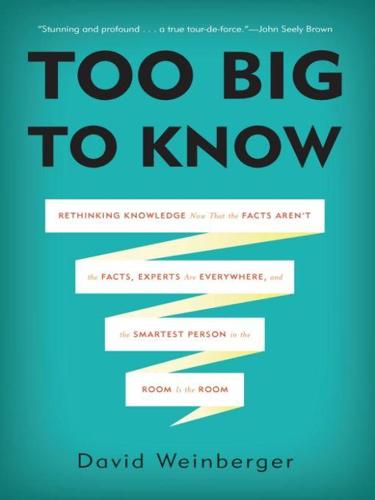
Too Big to Know: Rethinking Knowledge Now That the Facts Aren't the Facts, Experts Are Everywhere, and the Smartest Person in the Room Is the Room
by
David Weinberger
Published 14 Jul 2011
Thank you to Barbara Tillett, also at the Library, for her help. 9 See http://www.trancheproject.org. 10 Interview with John Wilbanks. 11 Southan and Cameron, “Beyond the Tsunami,” p. 117–118. 12 Hiroaki Kitano, “Systems Biology: A Brief Overview,” Science 295, no. 5560 (March 1, 2002): 1662–1664. 13 For a superb introduction, see Steven Johnson, Emergence (Scribner, 2001). 14 See http://www.icosystem.com/labsdemos/the-game/. 15 Eric Bonabeau, “Agent-Based Modeling: Methods and Techniques for Simulating Human Systems,” Proceedings of the National Academy of Sciences 99, suppl. 3 (May 14, 2002): 7280–7287, www.pnas.org/cgi/doi/0.1073/pnas.082080899. 16 Kellan Davidson, “Eureqa and Technological Singularity,” Ithaca Action News, May 12, 2010, http://ithacaactionnews.wordpress.com/2010/05/12/eureqa-and-technological-singularity/. 17 Quoted in Brandon Keim, “Download Your Own Robot Scientist,” Wired Science, December 3, 2009, http://www.wired.com/wiredscience/2009/12/download-robot-scientist/#ixzz0vrP0I4G9. See also the exceptional RadioLab program on this topic: “Limits of Science,” April 16, 2010, http://www.wnyc.org/shows/radiolab/episodes/2010/04/16/segments/149570. 18 Nicholas Taleb Nassim, The Black Swan (Random House, 2007). 19 The story may be apocryphal, according to a report by Nicholas Wade in “A Family Feud over Mendel’s Manuscript on the Laws of Heredity,” May 31, 2010, http://philosophyofscienceportal.blogspot.com/2010/06/gregor-mendel-and-pea-breeding.html. 20 Jennifer Laing, “Comet Hunter,” Universe Today, December 11, 2001, http://www.universetoday.com/html/articles/2001–1211a.html. 21 Jennifer Ouellette, “Astronomy’s Amateurs a Boon for Science,” Discovery News, September 20, 2010, http://news.discovery.com/space/astronomys-amateurs-a-boon-for-science.html. 22 Mark Frauenfelder, “The Return of Amateur Science,” Boing Boing, December 22, 2008, http://www.good.is/post/the-return-of-amateur-science/. 23 Thanks to the people who responded to the request for examples I posted on my Web site: Garrett Coakley, Jeremy Price, Miriam Simun, Andrew Weinberger, Jim Richardson, and Lars Ludwig.

Cloudmoney: Cash, Cards, Crypto, and the War for Our Wallets
by
Brett Scott
Published 4 Jul 2022
I look through its window and see Apollo 11 images above a disused burger grill, while F-16 fighter jets land behind me on Moffett airfield, part of which is leased from NASA by Google. Here too, in this sprawling compound, is the Singularity University campus, founded by space entrepreneur Peter Diamandis and Ray Kurzweil, Google’s prophet of the coming technological ‘Singularity’. This is the idea that, through our enmeshed innovations, humans will trigger an ‘automation of automation’: a tipping point at which intelligent machines create other machines and give birth to a vast technological ‘super-intelligence’ that we can fuse with to become gods of our environment.
…
While the individuals who work within this conglomeration can feel many things, the financial and corporate sector as an institutional complex is unable to ‘feel’ anything except profit, so our systems are running away with us, like a centrifuge spinning ever faster. It is this which leads to visions of a giant technological ‘Singularity’. Google’s futurist-in-chief Ray Kurzweil tries to put a mystical spin on this by invoking the Enlightenment tradition, which sees history as one long march to human transcendence over nature, alongside a parallel ascendency of mind over body. It begins with a vision of us crouching naked in the prehistoric wilderness.
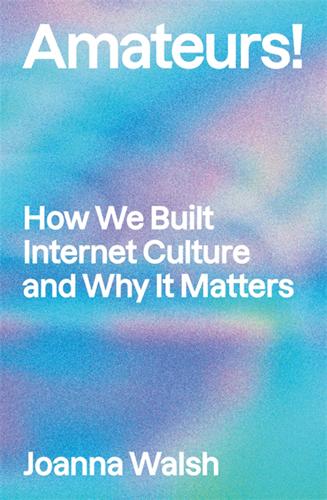
Amateurs!: How We Built Internet Culture and Why It Matters
by
Joanna Walsh
Published 22 Sep 2025
Derived from Marx, accelerationism advises speeding up capitalism to smash through dystopia to a post-capitalist utopia – or sometimes, just to smash. ‘Accelerationism’ was coined – critically – by the critical theorist, Benjamin Noys. It has left-wing iterations but is best known for alt-right fantasies of a technological singularity drawn from the writings of Nick Land, who accelerated Noys’s term into a movement. Noys’s response to Land was not to go faster, but to stop. ‘Marx says that revolutions are the locomotive of world history’ (Noys cites Walter Benjamin). ‘But perhaps it is quite otherwise. Perhaps revolutions are an attempt by the passengers on this train – namely, the human race – to pull the emergency brake.’14 Benjamin’s passenger is given no choice but to fight technology with its own provisions, implying that capitalism and revolution must be two parts of the same vector.
…
Fredric Jameson warns of a pre-AI postmodern ‘image addiction which, by transforming the past into visual mirages, 126stereotypes or texts, effectively abolishes any practical sense of the future and of the collective project, thereby abandoning the thinking of future change to fantasies of sheer catastrophe’.31 Timnit Gebru sees these fantasies recur with disturbing political consequences she identifies using the acronym she developed with Émile P. Torres: TESCREAL – transhumanism, extropianism, singularitarianism, cosmism, rationalism, effective altruism and longtermism – all alt-right ideologies predicting catastrophe or promising utopias via the embrace of technological singularity. These theories are prompted by a fear of the vulnerability of the human body and the temporary nature of wealth: of physical and material mortality. AI art is about having a what if thought. It offers more and better catastrophes, but it also offers alternatives. If the sublime conjured by AI art is awe not at unimaginable magnitude or quality but at the unimaginability of its process, then the question of whether and how we can ‘unweave the rainbow’ comes up, as it did for Keats when he considered the place of scientific knowledge in the Romantic aesthetic experience of nature.

The Second Machine Age: Work, Progress, and Prosperity in a Time of Brilliant Technologies
by
Erik Brynjolfsson
and
Andrew McAfee
Published 20 Jan 2014
Self-preservation alone would plausibly motivate this digital army to fight against us (perhaps using Siri as an interpreter for the enemy). In utopian versions of digital consciousness, we humans don’t fight with machines; we join with them, uploading our brains into the cloud and otherwise becoming part of a “technological singularity.” This is a term coined in 1983 by science-fiction author Vernor Vinge, who predicted that, “We will soon create intelligences greater than our own. . . . When this happens, human history will have reached a kind of singularity, an intellectual transition as impenetrable as the knotted space-time at the center of a black hole, and the world will pass far beyond our understanding.”6 Progress toward such a singularity, Vinge and others have argued, is driven by Moore’s Law.
…
Putnam, Bowling Alone: The Collapse and Revival of American Community, 1st ed. (New York: Simon & Schuster, 2001); finally, on environmental degradation, see Albert Gore, The Future: Six Drivers of Global Change, 2013. 6. Chad Brooks, “What Is the Singularity?” TechNewsDaily, April 29, 2013, http://www.technewsdaily.com/17898-technological-singularity-definition.html. 7. To improve the odds that he will be alive to see the singularity (he’ll be ninety-seven in 2045), Kurzweil has put himself on a self-engineered diet that includes taking 150 nutritional supplements every day. See Kristen Philipkoski, “Ray Kurzweil’s Plan: Never Die,” Wired, November 18, 2002, http://www.wired.com/culture/lifestyle/news/2002/11/56448. 8.

What Algorithms Want: Imagination in the Age of Computing
by
Ed Finn
Published 10 Mar 2017
Arbesman and Christakis, “Eurekometrics”; Evans and Foster, “Metaknowledge”; Waltz and Buchanan, “Computer Science. Automating Science.” 72. Strogatz, “The End of Insight”; Arbesman, “Explain It to Me Again, Computer.” 73. Bostrom, Superintelligence: Paths, Dangers, Strategies; Vinge, “The Coming Technological Singularity: How to Survive in the Post-Human Era.” 74. Golumbia, The Cultural Logic of Computation, 4–5. 75. Ibid., 8. 76. Turner, From Counterculture to Cyberculture, 2. 77. Gillespie, “The Relevance of Algorithms”; Pariser, The Filter Bubble; Galloway, Protocol. 78. Turner, From Counterculture to Cyberculture, 17. 79.
…
Journal for Cultural Research 13 (2) (April 2009): 125–141. doi: 10.1080/14797580902786473. “Video Streaming Services Could Make More Money than the US Box Office by 2017.” The Verge, June 4, 2014. http://www.theverge.com/2014/6/4/5781104/netflix-and-peers-will-make-more-money-than-box-office-by-2017. Vinge, Vernor. “The Coming Technological Singularity: How to Survive in the Post-Human Era.” Proceedings of Vision-21 Symposium. NASA Lewis Research Center: NASA, March 30, 1993. http://ntrs.nasa.gov/archive/nasa/casi.ntrs.nasa.gov/19940022855.pdf. Wallenstein, Andrew. “‘House of Cards’ Binge-Watching: 2% of U.S. Subs Finished Entire Series Over First Weekend” Variety.

The Singularity Is Near: When Humans Transcend Biology
by
Ray Kurzweil
Published 14 Jul 2005
Now, by creating the means to execute those simulations at much higher speeds, we are entering a regime as radically different from our human past as we humans are from the lower animals. From the human point of view, this change will be a throwing away of all the previous rules, perhaps in the blink of an eye, an exponential runaway beyond any hope of control. —VERNOR VINGE, "THE TECHNOLOGICAL SINGULARITY," 1993 Let an ultraintelligent machine be defined as a machine that can far surpass all the intellectual activities of any man however clever. Since the design of machines is one of these intellectual activities, an ultraintelligent machine could design even better machines; there would then unquestionably be an "intelligence explosion," and the intelligence of man would be left far behind.
…
The first reference to the Singularity as an event capable of rupturing the fabric of human history is John von Neumann's statement quoted above. In the 1960s, I. J. Good wrote of an "intelligence explosion" resulting from intelligent machines' designing their next generation without human intervention. Vernor Vinge, a mathematician and computer scientist at San Diego State University, wrote about a rapidly approaching "technological singularity" in an article for Omni magazine in 1983 and in a science-fiction novel, Marooned in Realtime, in 1986.19 My 1989 book, The Age of Intelligent Machines, presented a future headed inevitably toward machines greatly exceeding human intelligence in the first half of the twenty-first century.20 Hans Moravec's 1988 book Mind Children came to a similar conclusion by analyzing the progression of robotics.21 In 1993 Vinge presented a paper to a NASA-organized symposium that described the Singularity as an impending event resulting primarily from the advent of "entities with greater than human intelligence," which Vinge saw as the harbinger of a runaway phenomenon.22 My 1999 book, The Age of Spiritual Machines: When Computers Exceed Human Intelligence, described the increasingly intimate connection between our biological intelligence and the artificial intelligence we are creating.23 Hans Moravec's book Robot: Mere Machine to Transcendent Mind, also published in 1999, described the robots of the 2040s as our "evolutionary heirs," machines that will "grow from us, learn our skills, and share our goals and values, ... children of our minds."24 Australian scholar Damien Broderick's 1997 and 2001 books, both titled The Spike, analyzed the pervasive impact of the extreme phase of technology acceleration anticipated within several decades.25 In an extensive series of writings, John Smart has described the Singularity as the inevitable result of what he calls "MEST" (matter, energy, space, and time) compression.26 From my perspective, the Singularity has many faces.
…
As I discussed in chapter 6, there are conjectures that an advanced civilization may create a new universe to perform computation (or, to put it another way, to continue the expansion of its own computation). Our living in such a universe (created by another civilization) can be considered a simulation scenario. Perhaps this other civilization is running an evolutionary algorithm on our universe (that is, the evolution we're witnessing) to create an explosion of knowledge from a technology Singularity. If that is true, then the civilization watching our universe might shut down the simulation if it appeared that a knowledge Singularity had gone awry and it did not look like it was going to occur. This scenario is also not high on my worry list, particularly since the only strategy that we can follow to avoid a negative outcome is the one we need to follow anyway.
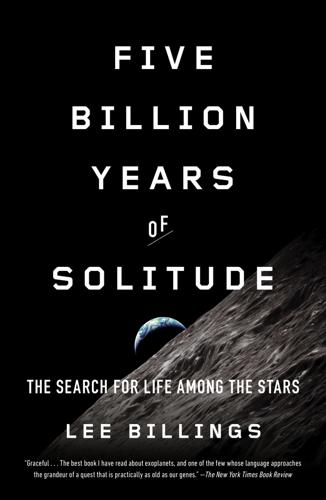
Five Billion Years of Solitude: The Search for Life Among the Stars
by
Lee Billings
Published 2 Oct 2013
What those changes meant for the future of our culture and our world remained to be seen, though it seemed possible that, given a few centuries’ time, we might not even recognize whatever our descendants had become. I mentioned to Drake that many of the same Silicon Valley tycoons who helped fund the SETI Institute often chattered about a dawning era of even more radical and rapid change, a coming “technological singularity” in which exponential growth in computing power and sophistication would profoundly transform, at minimum, the entire planet. Some techno-prophets spoke worshipfully or fearfully of computers becoming sentient and gaining godlike powers. Others speculated that someday humans would break free of their carbon-based chains by uploading their minds into silicon substrates, where they could, in some manner, live forever.
…
T., 15 Pennsylvania, 124, 128, 131, 133, 138, 143, 144 coal mining in, 125 Marcellus formation in, 126–30, 137, 138, 141, 144, 160 Pennsylvania State University, 127, 149, 153 Permian Period, 132 petroleum, 125–26, 137, 160, 184 Phanerozoic Eon, 138, 144 Phobos, 100 photolysis, 156, 172 photons, 72, 89, 115–16, 156, 191, 193–94, 201, 202, 213, 216, 237–38 photosynthesis, 29, 33, 131, 140–43, 154, 169, 175, 180–82 Pioneer, 239 Planetary Resources, Inc., 258–59 planetesimals, 2 planets: extrasolar, see exoplanets formation of, in our solar system, 2–3, 31, 109, 238 Kepler’s laws of motion of, 82–84 protoplanets, 2 transits of, 53 plants, 130–32, 143 photosynthesis in, 29, 33, 131, 140–43, 154, 169, 175, 180–82 plate tectonics, 30, 105, 111, 128, 140, 144, 169, 172, 176, 179, 229 Plato, 78–80, 82 Pluto, 110, 191, 239 polarization, 115–16 POLISH, 115–17 Pollack, James, 158 Pong, Christopher, 259 Precambrian period, 139–40, 144, 154, 238 precious metals, 105–6, 111 primordial soup, 19 Proceedings of the Royal Society, 84 Project Ozma, 11, 14, 47–48 prokaryotes, 139, 140, 143, 144 Proterozoic Eon, 140–44, 171, 179 protons, 88 protoplanets, 2 Proxima Centauri, 94, 97 psychohistory, 152 pyrite, 173 Pythagoras, 78, 82 Quaternary Period, 133 Queloz, Didier, 58 radio, 42–43, 45 Radio Astronomy Laboratory, 12 Recession, Great, 13, 106–7, 165, 196 recombination, 248, 249 red beds, 131 redox reactions, 168 redwood trees, 30–31, 106, 110 Regulus, 239 Renaissance, 22, 81 Reynolds, Ray, 155–56 Ricketts, Taylor, 74–77 Rittenhouse, David, 86 Road Map for the Exploration of Neighboring Planetary Systems, A, 211–12, 214, 221 rocket equation, 186 Sagan, Carl, 16, 19, 20, 24–25, 174, 239–42, 243 San Diego Air & Space Museum, 100 Sasselov, Dimitar, 226, 249 Saturn, 28, 83, 109, 191 Saturn rockets, 151–52, 187, 188, 202, 203 Schmidt, Eric, 258 Science, 104 scientific method, 78 Seager, Sara, 243–65 children of, 251–53, 156, 160–61, 264 ExoplanetSat project of, 256–57 “Next 40 Years of Exoplanets” conference of, 225–35, 263 as Planetary Resources advisor, 258–59 TPF work of, 225–28, 232–35, 249–53, 255–58, 262 Wevrick and, 244–49, 251–56, 264 Wevrick’s illness and death and, 253–56, 264, 265 Wevrick’s marriage to, 249 SETI (search for extraterrestrial intelligence), 9–14, 38, 41 Arecibo Observatory and, 41 Drake equation and, 16–25 first modern search by, 10–11 Green Bank conference of, 15–25, 27–28, 101, 167–68, 240 lack of funding for, 10–14 Laughlin’s view of, 99 NASA and, 11–12 Project Ozma, 11, 14, 47–48 SETI Institute, 12, 43 Allen Telescope Array of, 12–14, 41, 42 shales, see black shales Simonyi, Charles, 258 Smith, Matt, 259 Snowball Earth events, 142, 174, 179 solar eclipse, 119 solar system, 19, 87 evolution of, as viewed from stars, 238–39 formation of, 1–3, 31, 139 formation of Earth in, 2, 7, 20, 139, 173 formation of planets in, 2–3, 31, 109, 238 heliocentric model of, 79–82 measuring size of, 86 shell of light surrounding, 237–38 Soviet Union, 11 nuclear weapons and, 23 Soyuz rocket, 233–34 Venera 13, 50 Space Age, 48, 50, 87, 99, 112, 151 Space Interferometry Mission (SIM), 215 space junk, 13 Space Launch System, 204 space missions, 187–99 Apollo, 1, 50, 151, 187, 202, 212, 239 Ares V, 203 Atlantis, 185–87 ATLAST, 198, 203, 230 Challenger, 3, 188–89 Columbia, 189, 196 commercial providers and, 233–34, 258–59 Constellation program, 196, 198, 203, 204, 215, 221, 223 ExoplanetSat, 256–57 Galileo, 241–42 Great Observatories, 192, 197, 209 Hubble Space Telescope, 189–93, 195, 197–99, 205–7, 209, 218–19, 226 International Space Station, 187, 189, 197, 202, 207–8, 210 James Webb Space Telescope, 193–99, 202–4, 209, 215, 216, 218, 220, 225, 262 Kepler Space Telescope, 13–14, 53–54, 56, 62, 71–73, 98, 108–9, 166, 201, 225, 229–30, 263 to Mars, 187, 188, 196, 207, 221 to Moon, see Moon, missions to New Horizons, 239 OpTIIX, 207–8, 210 Pioneer, 239–40 Saturn rockets, 151–52, 187, 188, 202, 203 shuttle program failures, 188–89 Terrestrial Planet Finders, see Terrestrial Planet Finders Tsiolkovsky and, 186–87 Voyager, see Voyager missions Space Telescope Science Institute, 198, 199, 212, 257–58 spectra, 200–202, 250 spectroscopy, spectrometers, 33–34, 51–52 in Alpha Centauri search, 94–98 CHIRON, 62 Hamilton, 58, 114 HARPS, 60–61, 63–69, 96, 98 HIRES, 59–63, 66 iodine cell calibration in, 58 radial-velocity (RV), 51, 53–58, 60, 61–64, 66, 68, 94–98, 108, 114 Spergel, David, 218–20, 249 Spitzer, Lyman, 189, 209 Spitzer Space Telescope, 192, 209 Sproul Telescope, 52 spy satellites, 188, 189, 205, 209 SRI International, 42 Stahl, Phil, 203 Stamenkovic, Vlada, 259 stars, 200–201 47 Ursae Majoris, 59 51 Pegasi, 50 61 Virginis, 55 70 Virginis, 59 Alpha Centauri, see Alpha Centauri binary systems, 18, 94 Dyson spheres for capturing energy of, 104, 105 in early cosmology, 78–80 of exoplanets, observations of, 33 formation of, 17–18, 27 GJ 667C, 65, 66 Gliese 581, 63, 68, 163 HD 83443, 60 HD 209458, 60, 228 HR 8799, 238 Kepler field, 41 laws of nature and, 155–56 M13 cluster, 39–41 measuring distances to, 86 Proxima Centauri, 94, 97 red dwarf (M-dwarf), 27, 172, 228–30, 262 spectroscopy and, see spectroscopy, spectrometers Sun-like, 18, 50, 55, 201, 228, 230, 238, 256, 257 transits of planets across, 53 Star Wars, 260–61 Stoermer, Eugene, 135 Struve, Otto, 15, 18–19, 25, 32, 47–48 sulfuric acid, 173 Sun, 31, 73, 87 birth of, 2, 31, 238 Dyson spheres for capturing energy of, 104, 105 in early cosmology, 78–82 Earth’s distance from, 83, 86 end of life on Earth caused by, 7, 31–32, 75–77, 159, 180–83 faint young Sun problem, 173–75 heliocentrism and, 79–82 orbit of, 95 shell of light surrounding, 237–38 as telescope, 35–37 Sun-like stars, 18, 50, 55, 201, 228, 230, 238, 256, 257 supernovae, 30, 88 Swarthmore College, 52 systemic, 71 Systemic Console, 54, 65 Tau Ceti, 10–11 technological civilizations, 29, 32, 104–5 emergence of, 21–22 longevity of, 22–25, 38–39, 41, 42 technological progress, 136, 183 Urey on, 101–3 and visibility of communication, 42–43 technological singularity, 43–44 tectonic plates, 30, 105, 111, 128, 140, 144, 169, 172, 176, 179, 229 telescopes, 34–36, 51, 61, 99, 170–71, 199, 201–4, 206, 208, 211–12, 223 active optics in, 204–6, 208 Allen Array, 12–14, 41, 42 ATLAST, 198, 203, 230 Automated Planet Finder, 61, 70, 114 ExoplanetSat, 256–57 Galileo’s use of, 81–82, 210 Gemini, 199–200, 203 in Great Observatories program, 192, 197, 209 Hubble, 189–93, 195, 197–99, 205–7, 209, 218–19, 226 James Webb (JWST), 193–99, 202–4, 209, 215, 216, 218, 220, 225, 262 Kasting and, 152–54 Kepler, 13–14, 53–54, 56, 62, 71–73, 98, 108–9, 166, 201, 225, 229–30, 263 mEarth Project, 228–29 Sun as, 35–37 Terrestrial Planet Finders, see Terrestrial Planet Finders see also observatories Teller, Edward, 101 temperature-pressure profile, 157–58 Terrestrial Planet Finders (TPFs), 165–67, 184, 194, 196–98, 214–35, 241, 242, 263 coronagraphic, 217–22, 224, 231, 249 interferometer concept for, 213–14, 216, 231 Seager’s work with, 225–28, 232–35, 249–53, 255–58, 262 starshade (occulter) concept for, 220–21, 225 TESS (Transiting Exoplanet Survey Satellite), 229–30 Thales, 77–79, 238 Thébault, Philippe, 97 thermodynamic disequilibrium, 168–69 Thoreau, Henry, 254 Time, 52 time, deep, 145–46 time capsule, 100–103 Todd, David Peck, 114 Toronto Sun, 74 transits, 53, 56, 84–86, 114–20, 204, 229–30, 251, 263 Traub, Wesley, 217–19, 221–25, 235 travel, interstellar, 44–45, 100–101 tropopause, 158–59 Tsiolkovsky, Konstantin, 186–87, 199, 225, 231 Turner, Edwin, 249–50 2063 A.D., 100–103 universe: Big Bang and, 89–91 evolution of, 88–89 expansion of, 87–90 inflation of, 89–92 recombination in, 248, 249 smoothness of, 89 universes, parallel, 90–91 University of California, 113 University of California, Berkeley: Miller Institute for Basic Research in Science, 48, 74 Radio Astronomy Laboratory, 12 University of California, Santa Cruz, 107–8 University of Vermont, 74–75 Uranus, 109–10 Urey, Harold, 15, 19 2063 A.D. entry of, 101–3 Utt, James B., 101 Valencia, Diana, 259 van de Kamp, Peter, 52–53 Venera 13, 50 Venus, 19, 49–50, 54, 87, 109, 154, 155, 179, 239 atmosphere of, 116, 159–60 climate of, 158–59 Galileo’s study of, 81–82 Kepler’s study of, 83–84 Laughlin’s valuation of, 73 transits of, 83–86, 114–20 water on, 28, 171–72, 179 Vogt, Steve, 55, 58–64, 66–70 Von Braun, Wernher, 1, 151, 186 Voyager missions, 35, 239–42 image of Earth from, 239–42 phonograph records on, 240 Walden (Thoreau), 254 Walden Pond, 254 Walker, James, 176–79, 181 water, 157, 170–71 on Earth, 3, 30, 158–61, 174, 177–80, 182 on Mars, 28, 179 on Venus, 28, 171–72, 179 Wevrick, Mike, 244–49, 251–56, 264 illness and death of, 253–56, 264, 265 Seager’s marriage to, 249 Whipple, Fred, 100 Whitfield, Michael, 181–82 Whitmire, Dan, 155–56 Wiktorowicz, Sloane, 115–19 Wolfe, Tom, 1 world government, 102 Wright, Orville and Wilbur, 186 Zachary, Pavl, 117–18
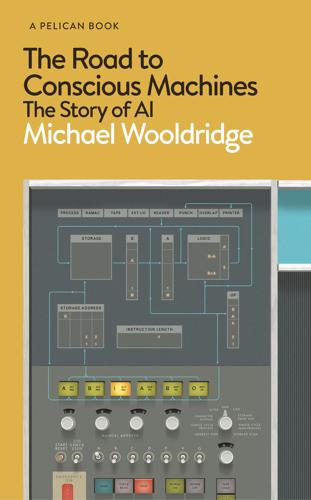
The Road to Conscious Machines
by
Michael Wooldridge
Published 2 Nov 2018
, then the book you probably need to read is Deep Learning, by Ian Goodfellow, Yoshua Bengio and Aaron Courville (MIT Press, 2017). Finally, note that Russell and Norvig (see my second paragraph above) have excellent coverage of the various other approaches to machine learning. For a good discussion on the Singularity, I recommend Murray Shanahan’s very readable The Technological Singularity (MIT Press, Essential Knowledge Series, 2015); for ethical AI, see Virginia Dignum’s Responsible Artificial Intelligence (Springer, 2019); for technology and employment, see Carl Benedikt Frey’s The Technology Trap (Princeton University Press, 2019). A classic introduction to the ideas of strong AI and conscious machines is Maggie Boden’s Artificial Intelligence and Natural Man (MIT Press, 1977).
…
Emerald, 2018. 10. https://corporate.ford.com/innovation/autonomous-2021.html. 11. https://www.riotinto.com/media/media-releases-237_23991.aspx. * * * CHAPTER 7: HOW WE IMAGINE THINGS MIGHT GO WRONG 1. http://tinyurl.com/ybsrkr4a. 2. R. Kurzweil. The Singularity is Near. Penguin, 2005. 3. V. Vinge. ‘The Coming Technological Singularity: How to Survive in the Post-Human Era’. NASA Lewis Research Center, Vision 21: Interdisciplinary Science and Engineering in the Era of Cyberspace, pp. 11–22. 4. T. Walsh. ‘The Singularity May Never Be Near’. arXiv:1602.06462v1. 5. https://tinyurl.com/y622vm6k. 6. D. S. Weld and O.
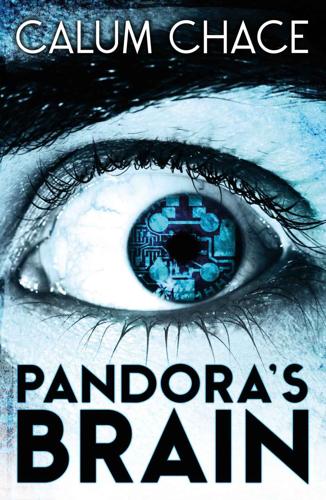
Pandora's Brain
by
Calum Chace
Published 4 Feb 2014
‘Yeah, it is,’ Carl conceded, ‘but you can find yourself reading about some pretty nutty stuff.’ ‘Such as?’ ‘Well, for instance there’s a group of people who believe the arrival of conscious, super-intelligent machines is imminent, and they want to prepare the world for something called the technological Singularity.’ ‘What on earth’s a technological Singularity? I mean, I know what a mathematical Singularity is, but I’m guessing that’s not what they’re talking about.’ Carl nodded. ‘From what I’ve read it’s what happens when somebody creates the first conscious machine intelligence. There’s an intelligence explosion, and the future beyond that point is hard or impossible to predict or even imagine, except that we join forces with the machine intelligence and it takes us to the next level.
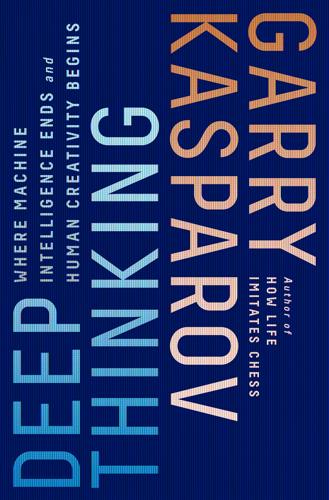
Deep Thinking: Where Machine Intelligence Ends and Human Creativity Begins
by
Garry Kasparov
Published 1 May 2017
The prolific inventor and futurist Ray Kurzweil ran in the opposite direction with the concept of super-intelligent machines. His 2005 book, The Singularity Is Near, became a bestseller, although, as with so many predictions, “near” is always just close enough to be ominous but never close enough to be in focus. Kurzweil describes a nearly utopian future in which the technological singularity combines genetics and nanotechnology to augment minds and bodies as humans approach an extremely advanced level of cognition and lifespan. Noel Sharkey has taken a practical approach with his work for establishing ethical norms for autonomous machines, especially “killer robots” in his admirably blunt description.
…
Ian Goldin wrote an important book, Age of Discovery: Navigating the Risks and Rewards of Our New Renaissance, and left Oxford Martin in mid-2016. The new director is Achim Steiner. “the world will pass far beyond our understanding.” Vernor Vinge in an op-ed in Omni magazine, January 1983. “we will have the technological means to create superhuman intelligence.” Vernor Vinge, “The Coming Technological Singularity: How to Survive in the Post-Human Era,” originally in Vision-21: Interdisciplinary Science and Engineering in the Era of Cyberspace, G. A. Landis, ed., NASA Publication CP-10129, 11–22, 1993. in real life things are far more complex. Asimov’s Three Laws of Robotics: “A robot may not injure a human being or, through inaction, allow a human being to come to harm.
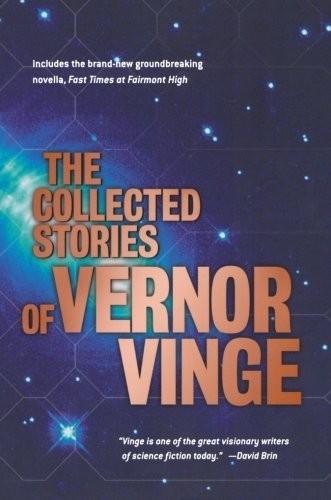
The Collected Stories of Vernor Vinge
by
Vernor Vinge
Published 30 Sep 2001
It’s a problem writers face every time we consider the creation of intelligences greater than our own. When this happens, human history will have reached a kind of singularity—a place where extrapolation breaks down and new models must be applied—and the world will pass beyond our understanding. In one form or another, this Technological Singularity haunts many science-fiction writers: A bright fellow like Mark Twain could predict television, but such extrapolation is forever beyond, say, a dog. The best we writers can do is creep up on the Singularity, and hang ten at its edge. (My extended song-and-dance about this idea is at http://www.rohan.sdsu.edu/faculty/vinge/misc/singularity.html.
…
Beyond the rescue scene I had only general ideas, and things stagnated; finishing the story was a fortunate and interesting collaboration. THE UNGOVERNED At least four of the stories in this collection take place in the aftermath of a catastrophic war. A couple of them use the setting as a stage for admonishment. But there is another reason for some post-catastrophe stories: such a war could postpone the Technological Singularity and leave the world intelligible to us mere humans. Lots of writers have earned their fortunes “in the aftermath” when high tech and medievalism can be jumbled in many different ways. It’s hard to know the long-range consequences of a general war. Conceivably it could mean the end of the human race.
…
Bill and I had many small things in our idea boxes that found a nice home here: the Canadian background, the danger of colonizing a planet whose core was about to undergo a phase change. We were vague about Chente’s background on Earth. This was deliberate. I assumed Earth had already gone through the Technological Singularity. We see about as much of Earth as we could understand. One major aspect of Earth’s technology leaks into this story: the duplicative transport used to bring Chente to New Canada. Not much is made of it here, but I find the idea immensely intriguing. If we could make exact copies of someone (not just clones, but exact down to quantum limits) what would this do to our concept of ego?
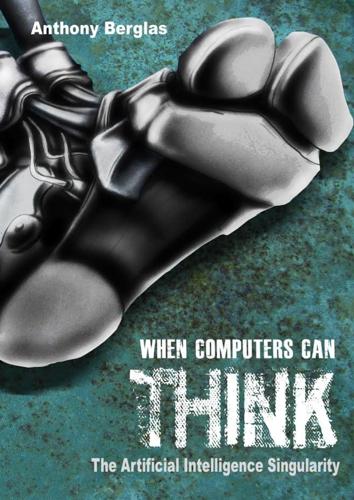
When Computers Can Think: The Artificial Intelligence Singularity
by
Anthony Berglas
,
William Black
,
Samantha Thalind
,
Max Scratchmann
and
Michelle Estes
Published 28 Feb 2015
The super goal 10. AGI moral values 11. AGI and man 12. How humanity might be threatened 13. Why build a dangerous AGI? 14. Three laws of robotics 15. Sealed box 16. Friendly AGI 17. Primary assertions and objections 18. Other threats 19. Community Awareness 20. Is it a bad thing? 3. The Technological Singularity 1. Early computing machines 2. RK05 disk drive 3. Moore's law, transistors 4. Core and disk storage 5. Limits to growth 6. Long term growth 7. Human intelligence now minimal for AGI 8. Definitions of singularity 4. Hollywood and HAL 2001 1. Anthropomorphic zap gun vs. virus 2. The two HAL's 3.
…
However, the future clearly does not involve us personally — we will grow old and die in any case. We hope that our grandchildren will be more intelligent than we are. Maybe developing an AGI is just the natural progress of evolving to higher intelligences. Maybe it is the way that “we” achieve immortality. The Technological Singularity Early computing machines It is difficult to appreciate just how daunting computers were when they were first introduced in the 1950s. Those primitive computers could perform thousands of calculations per second, and do the work of hundreds of junior engineers and clerks. Indeed, until that time a “computer” was somebody that computed things for a living, often using a mechanical adding machine or slide rule.

Machines of Loving Grace: The Quest for Common Ground Between Humans and Robots
by
John Markoff
Published 24 Aug 2015
The year 2045 is when Ray Kurzweil predicts humans will transcend biology, and implicitly, one would presume, destiny.37 Kurzweil, the serial artificial intelligence entrepreneur and author who joined Google as a director of engineering in 2012 to develop some of his ideas for building an artificial “mind,” represents a community of many of Silicon Valley’s best and brightest technologists. They have been inspired by the ideas of computer scientist and science-fiction author Vernor Vinge about the inevitability of a “technological singularity” that would mark the point in time at which machine intelligence will surpass human intelligence. When he first wrote about the idea of the singularity in 1993, Vinge framed a relatively wide span of years—between 2005 and 2030—during which computers might become “awake” and superhuman.38 The singularity movement depends on the inevitability of mutually reinforcing exponential improvements in a variety of information-based technologies ranging from processing power to storage.
…
(New York: Simon & Schuster, 2014), Kindle location 222–230. 34.Tim O’Reilly, Google+, January 9, 2014, https://plus.google.com/+TimOReilly/posts/F85gaWoBp3Z. 35.Matthieu Pélissié du Rausas, James Manyika, Eric Hazan, Jacques Bughin, Michael Chui, and Rémi Said, “Internet Matters: The Net’s Sweeping Impact on Growth, Jobs, and Prosperity,” McKinsey Global Institute, May 2011, http://www.mckinsey.com/insights/high_tech_telecoms_internet/internet_matters. 36.“The Last Kodak Moment?” Economist, January 12, 2012, http://www.economist.com/node/21542796. 37.Ray Kurzweil, The Singularity Is Near: When Humans Transcend Biology (New York: Penguin Books, 2006). 38.“The Coming Technological Singularity: How to Survive in the Post-Human Era,” VISION-21 Symposium, NASA Lewis Research Center, NASA technical reports, NASA CP-10129, March 30–31, 1993, https://www-rohan.sdsu.edu/faculty/vinge/misc/singu larity.html. 39.Robert Geraci, Apocalyptic AI: Visions of Heaven in Robotics, Artificial Intelligence, and Virtual Reality, reprint edition (New York: Oxford University Press, 2012). 40.Moshe Y.

The People vs Tech: How the Internet Is Killing Democracy (And How We Save It)
by
Jamie Bartlett
Published 4 Apr 2018
Perhaps eventually the world will be so complicated and confusing that a super-intelligent AI will be necessary just to keep it all moving along. What would be the moral case for humans to make significant decisions if there was another, superior, system? And what then would a democracy be, except an inefficient way to make consistently bad choices? Futurists often talk about something they call the ‘technological singularity’. It’s the point at which machine self-improvement sparks a runaway, self-replicating cycle. Ray Kurzweil, capo di capi of futurists, undoubted genius and scientist at Google, has suggested this will occur around the middle of the century. (Others disagree.) Far sooner and more likely, in my view, is what I’ll call the ‘moral singularity’ – the point at which we will start to delegate substantial moral and political reasoning to machines.
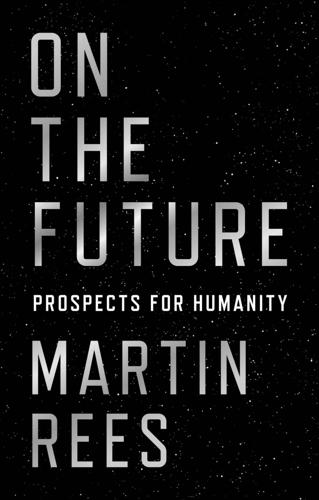
On the Future: Prospects for Humanity
by
Martin J. Rees
Published 14 Oct 2018
Thomas, Inheritors of the Earth (London: Allen Lane, 2017). 6. Steven Pinker, The Better Angels of Our Nature: Why Violence Has Declined (New York: Penguin Books, 2011). 7. Freeman Dyson, Dreams of Earth and Sky (New York: Penguin Random House, 2015). 8. An overview of these developments is given in Murray Shanahan, The Technological Singularity (Cambridge, MA: MIT Press, 2015); and Margaret Boden, AI: Its Nature and Future (Oxford: Oxford University Press, 2016). A more speculative ‘take’ is offered by Max Tegmark, Life 3.0: Being Human in the Age of Artificial Intelligence (New York: Penguin Random House 2017). 9. David Silver et al., ‘Mastering the Game of Go without Human Knowledge’, Nature 550 (2017): 354–59. 10.
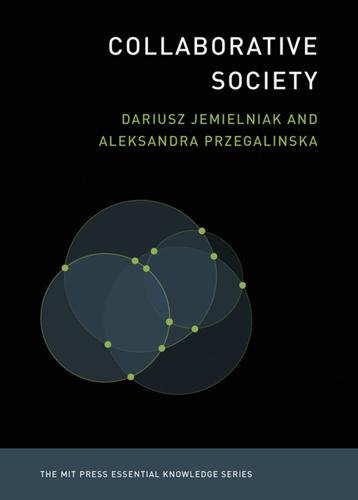
Collaborative Society
by
Dariusz Jemielniak
and
Aleksandra Przegalinska
Published 18 Feb 2020
Memes in Digital Culture, Limor Shifman Metadata, Jeffrey Pomerantz The Mind–Body Problem, Jonathan Westphal MOOCs, Jonathan Haber Neuroplasticity, Moheb Costandi Nihilism, Nolen Gertz Open Access, Peter Suber Paradox, Margaret Cuonzo Post-Truth, Lee McIntyre Quantum Entanglement, Jed Brody Recycling, Finn Arne Jørgensen Robots, John Jordan School Choice, David R. Garcia Self-Tracking, Gina Neff and Dawn Nafus Sexual Consent, Milena Popova Smart Cities, Germaine R. Halegoua Spaceflight, Michael J. Neufeld Spatial Computing, Shashi Shekhar and Pamela Vold Sustainability, Kent E. Portney Synesthesia, Richard E. Cytowic The Technological Singularity, Murray Shanahan 3D Printing, John Jordan Understanding Beliefs, Nils J. Nilsson Virtual Reality, Samuel Greengard Waves, Frederic Raichlen Dariusz Jemielniak is Professor of Management at Kozminski University, Poland, where he heads the Management in Networked and Digital Societies (MINDS) Department, and the author of Common Knowledge?

Blockchain: Blueprint for a New Economy
by
Melanie Swan
Published 22 Jan 2014
Blockchain AI: Consensus as the Mechanism to Foster “Friendly” AI One forward-looking but important concern in the general future of technology is different ways in which artificial intelligence (AI) might arise and how to sponsor it such that it engenders a “friendly” or benevolent relationship with humans. There is the notion of a technological singularity, a moment when machine intelligence might supersede human intelligence. However, those in the field have not set forth any sort of robust plan for how to effect friendly AI, and many remain skeptical of this possibility.195 It is possible that blockchain technology could be a useful connector of humans and machines in a world of increasingly autonomous machine activity through Dapps, DAOs, and DACs that might eventually give way to AI.
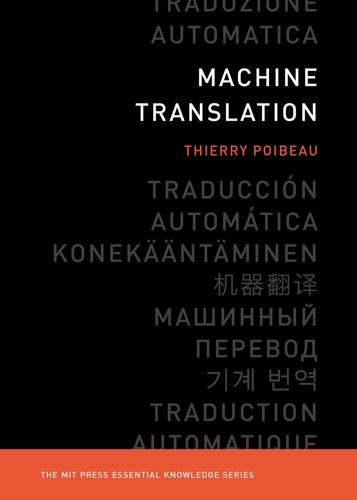
Machine Translation
by
Thierry Poibeau
Published 14 Sep 2017
Cortada Intellectual Property Strategy, John Palfrey The Internet of Things, Samuel Greengard Machine Learning: The New AI, Ethem Alpaydin Machine Translation, Thierry Poibeau Memes in Digital Culture, Limor Shifman Metadata, Jeffrey Pomerantz The Mind–Body Problem, Jonathan Westphal MOOCs, Jonathan Haber Neuroplasticity, Moheb Costandi Open Access, Peter Suber Paradox, Margaret Cuonzo Robots, John Jordan Self-Tracking, Gina Neff and Dawn Nafus Sustainability, Kent E. Portney The Technological Singularity, Murray Shanahan Understanding Beliefs, Nils J. Nilsson Waves, Frederic Raichlen Machine Translation Thierry Poibeau The MIT Press Cambridge, Massachusetts London, England © 2017 Massachusetts Institute of Technology All rights reserved. No part of this book may be reproduced in any form by any electronic or mechanical means (including photocopying, recording, or information storage and retrieval) without permission in writing from the publisher.

The Rational Optimist: How Prosperity Evolves
by
Matt Ridley
Published 17 May 2010
Machines may have become sufficiently intelligent to design themselves, in which case the rate of economic growth may by then have changed as much as it did at the start of the industrial revolution – so that the world economy will be doubling in months or even weeks, and accelerating towards a technological ‘singularity’ where the rate of change is almost infinite. But here goes, none the less. I forecast that the twenty-first century will show a continuing expansion of catallaxy – Hayek’s word for spontaneous order created by exchange and specialisation. Intelligence will become more and more collective; innovation and order will become more and more bottom-up; work will become more and more specialised, leisure more and more diversified.
…
‘Economic growth’ in the Concise Encyclopedia of Economics (edited by David R Henderson, published by Liberty Fund); and Romer, P. 1994. New goods, old theory, and the welfare costs of trade restrictions. Journal of Development Economics 43:5–38. p. 355 ‘the world economy will be doubling in months or even weeks’. Hanson, R. 2008. Economics of the Singularity. IEEE Spectrum (June 2008) 45:45–50. p. 355 ‘a technological “singularity”’. This notion has been explored by Vernor Vinge and Ray Kurzweil. See Kurzweil, R. 2005. The Singularity Is Near. Penguin. p. 355 ‘says Stephen Levy.’ Levy, S. 2009. Googlenomics. Wired, June 2009. p. 356 ‘says the author Clay Shirky’. Shirky, C. 2008. Here Comes Everybody. Penguin.

Robot Rules: Regulating Artificial Intelligence
by
Jacob Turner
Published 29 Oct 2018
Ruminoff, Vol. 6 (New York: Academic Press, 1965). 106Nick Bostrom, “How Long Before Superintelligence?”, International Journal of Future Studies, 1998, vol. 2.. 107 The singularity was conceived of shortly after the advent of modern AI studies, having been introduced by John von Neumann in 1958 and then popularised by Vernor Vinge, in “The Coming Technological Singularity: How to Survive in the Post-human Era” (1993), available at: https://edoras.sdsu.edu/~vinge/misc/singularity.html, accessed 22 June 2018 and subsequently by Ray Kurzweil, The Singularity Is Near: When Humans Transcend Biology (New York: Viking Press, 2005). 108In 1968, a Scottish chess champion bet AI pioneer John McCarthy £500 that a computer would not be able to beat him by 1979.
…
Omohundro, “The Basic AI Drives”, in Proceedings of the First Conference on Artificial General Intelligence, 2008. 139Stuart Russell, “Should We Fear Supersmart Robots?”, Scientific American, Vol. 314 (June 2016), 58–59. 140Nate Soares and Benja Fallenstein, “Aligning Superintelligence with Human Interests: A Technical Research Agenda”, in The Technological Singularity (Berlin and Heidelberg: Springer, 2017), 103–125. See also Stephen M. Omohundro, “The Basic AI Drives”, in Proceedings of the First Conference on Artificial General Intelligence, 2008. 141Ibid. 142Nick Bostrom, Superintelligence : Paths, Dangers, Strategies (Oxford: Oxford University Press, 2014), Chapter 9. 143See John von Neumann and Oskar Morgenstern, Theory of Games and Economic Behavior (Princeton, NJ: Princeton University Press, 1944). 144Nate Soares and Benja Fallenstein, “Toward Idealized Decision Theory”, Technical Report 2014–7 (Berkeley, CA: Machine Intelligence Research Institute, 2014), https://arxiv.org/abs/1507.01986, accessed 1 June 2018. 145See, for example, Thomas Harris, The Silence of the Lambs (London: St.
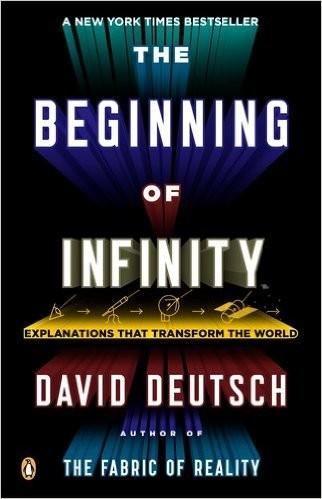
The Beginning of Infinity: Explanations That Transform the World
by
David Deutsch
Published 30 Jun 2011
That being so, if our species will nevertheless have a finite lifetime, then knowing the total number of humans who will ever live provides no upper bound on that lifetime, because it cannot tell us how long the potentially immortal humans of the future will live before the prophesied catastrophe strikes. In 1993 the mathematician Vernor Vinge wrote an influential essay entitled ‘The Coming Technological Singularity’, in which he estimated that, within about thirty years, predicting the future of technology would become impossible – an event that is now known simply as ‘the Singularity’. Vinge associated the approaching Singularity with the achievement of AI, and subsequent discussions have centred on that.
…
: Everett, Quantum Theory, and Reality (Oxford University Press, 2010) David Deutsch, ‘It from Qubit’, in John Barrow, Paul Davies and Charles Harper, eds., Science and Ultimate Reality (Cambridge University Press, 2003) David Deutsch, ‘Quantum Theory of Probability and Decisions’, Proceedings of the Royal Society A455 (1999) David Deutsch, ‘The Structure of the Multiverse’, Proceedings of the Royal Society A458 (2002) Richard Feynman, The Character of Physical Law (BBC Publications, 1965) Richard Feynman, The Meaning of It All (Allen Lane, 1998) Ernest Gellner, Words and Things (Routledge & Kegan Paul, 1979) William Godwin, Enquiry Concerning Political Justice (1793) Douglas Hofstadter, Gödel, Escher, Bach: An Eternal Golden Braid (Basic Books, 1979) Douglas Hofstadter, I am a Strange Loop (Basic Books, 2007) Bryan Magee, Popper (Fontana, 1973) Pericles, ‘Funeral Oration’ Plato, Euthyphro Karl Popper, In Search of a Better World (Routledge, 1995) Karl Popper, The World of Parmenides (Routledge, 1998) Roy Porter, Enlightenment: Britain and the Creation of the Modern World (Allen Lane, 2000) Martin Rees, Just Six Numbers (Basic Books, 2001) Alan Turing, ‘Computing Machinery and Intelligence’, Mind, 59, 236 (October 1950) Jenny Uglow, The Lunar Men (Faber, 2002) Vernor Vinge, ‘The Coming Technological Singularity’, Whole Earth Review, winter 1993 *The term was coined by the philosopher Norwood Russell Hanson. *This terminology differs slightly from that of Dawkins. Anything that is copied, for whatever reason, he calls a replicator. What I call a replicator he calls an ‘active replicator’.

Why Stock Markets Crash: Critical Events in Complex Financial Systems
by
Didier Sornette
Published 18 Nov 2002
There is also the possibility that the computational competence of single neurons may be far higher than generally believed. If so, our present computer hardware might be as much as ten orders of magnitude short of the equipment we carry around in our heads. If this is true (or for that matter, if the Penrose or Searle critique is valid), we might never see the singularity [438]. But if the technological singularity can happen, it will. Vinge argues that we cannot prevent the singularity, that its coming is an inevitable consequence of humans’ natural competitiveness and the possibilities inherent in technology. Within this scenario, a central feature of strongly superhuman entities will likely be their ability to communicate at variable bandwidths, including ones far higher than speech or written messages.
…
(1989). Difference of opinion in financial markets, in Financial Risk: Theory, Evidence and Implications, Proceedings of the Eleventh Annual Economic Policy Conference of the Federal Reserve Bank of St. Louis, Courtenay C. Stone, editor (Kluwer, Boston). 438. Vinge, V. (1993). The Coming Technological Singularity: How to Survive in the Post-Human Era, available at http://www.aleph.se/Trans/Global/Singularity/ sing.html, presented at the VISION-21 Symposium sponsored by NASA Lewis Research Center and the Ohio Aerospace Institute, March 30–31, 1993. 439. Visser, W. (1997). Can the casino economy be tamed?

Robots Will Steal Your Job, But That's OK: How to Survive the Economic Collapse and Be Happy
by
Pistono, Federico
Published 14 Oct 2012
According to the available evidence, we can infer that this trend will continue for the foreseeable future, or at least another 30 years. Eventually, it will hit physical limits imposed by the laws of nature, and its increase will have to slow down. Some suggest that we may be able to circumvent that problem, once the singularity is reached. Technological Singularity refers to the time when the speed of technological change is so fast that we are unable to predict what will happen. At that moment, computer intelligence will exceed that of human’s, and we will not even be able to understand what changes are happening. The term was first coined by science fiction writer Vernon Vinge and subsequently popularised by many authors, predominantly Ray Kurzweil with his books The Age of Spiritual Machines and The Singularity is Near.
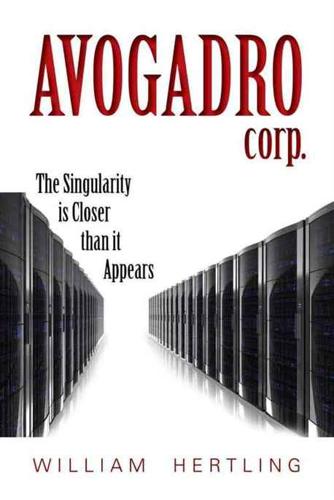
Avogadro Corp
by
William Hertling
Published 9 Apr 2014
You can’t make this decision.” “If the future turns out to be a Terminator scenario, then yes, the fault will lie with us,” Sean answered. “But it’s also possible, and indeed, I believe it is more likely that this decision will prevent exactly the atrocities which you fear. If we’re approaching a true technological singularity, and as Mike asserts, ELOPe becomes a driving force for humanity’s progress, then we’ll be unsung heroes. Either way, we are going to live with this decision.” Epilogue One year later Mike tacked the latest news clipping up on the wall. A year ago Mike had become part of Sean’s top secret team to monitor ELOPe.

The End of Traffic and the Future of Transport: Second Edition
by
David Levinson
and
Kevin Krizek
Published 17 Aug 2015
Trends are bending around vehicle use, overall travel, and technology. Ray Kurzweil,106 for instance, observes that technology advances at an accelerating rate, and is deployed more widely more quickly today than yesterday. Horace Dediu has made a similar point less breathlessly.107 108 If not arriving at a 'technological singularity', we see accelerating technical progress as fairly obvious; it applies most clearly to the information technology sector, where Moore's and kindred laws show the period of doubling of various technology. David's first personal computer was an Apple ][+ with 48 kilobytes (kB) of memory. He spent more than $100 to upgrade by an extra 16kB.

Whiplash: How to Survive Our Faster Future
by
Joi Ito
and
Jeff Howe
Published 6 Dec 2016
Most experts in machine learning believe AI will progress to that point someday, though most would sooner address the Nobel Prize committee in their skivvies than offer so specific a date as Kurzweil. A singularity, technically speaking, is the point at which a function takes an infinite value, such as what happens to space and time at the center of a black hole. What happens after a technological singularity? According to Kurzweil we enter a period of blissful transhumanism, in which the line between human and machine becomes indistinguishable, and the superintelligences that roam the planet solve all of mankind’s problems. Others—Elon Musk, Paypal alum and the inventor behind Tesla Motors, for one—believe the machines will rightly see humans as a kind of metastasizing cancer infecting the planet, and zap Homo sapiens out of existence.

Future Crimes: Everything Is Connected, Everyone Is Vulnerable and What We Can Do About It
by
Marc Goodman
Published 24 Feb 2015
Given the exponential pace of change in computer processing power and sophistication, it should be obvious that in the very near future computers will become profoundly capable. Ray Kurzweil describes the constant doubling of computing’s price performance and power in his “law of accelerating returns.” He predicts a point in time where a technological singularity will take place—that is, a moment in time where computing progress is so rapid it outpaces mankind’s ability to comprehend it and machine intelligence will exceed human intelligence. Whether or not that day eventually comes (Kurzweil predicts the year to be 2045), one thing is clear: computing power is growing exponentially, and our ability to understand the global information grid and map its vast interconnections is waning.
…
Man’s Last Invention: Artificial General Intelligence By the time Skynet became self-aware, it had spread into millions of computer servers all across the planet. Ordinary computers in office buildings, dorm rooms, everywhere. It was software, in cyberspace. There was no system core. It could not be shut down. JOHN CONNOR, TERMINATOR 3: RISE OF THE MACHINES Ray Kurzweil has popularized the idea of the technological singularity: that moment in time in which nonhuman intelligence exceeds human intelligence for the first time in history—a shift so profound that it’s often been referred to as our “final invention.” Though the idea may sound far-fetched to many, we’ve heard similar strongly declarative nay-saying predictions in the past: • There is no reason anyone would want a computer in their home (Ken Olsen, president of Digital Equipment Corporation, 1977)
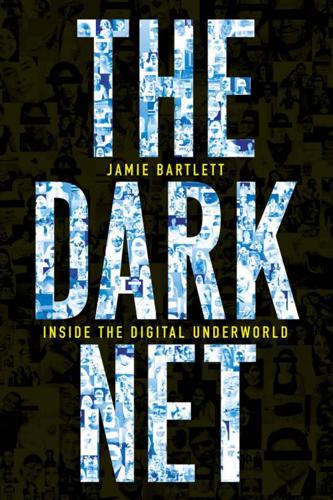
The Dark Net
by
Jamie Bartlett
Published 20 Aug 2014
More, M., ‘The Philosophy of Transhumanism’, in More, M. and Vita-More, N., The Transhumanist Reader: Classical and Contemporary Essays on the Science, Technology and Philosophy of the Human Future, p.4. p.223 ‘(Nick Bostrom, a well-known . . .’ http://www.nickbostrom.com/papers/history.pdf. p.224 ‘In 1993, Vernor Vinge popularised . . .’ ‘The Coming Technological Singularity: How to Survive in the Post-Human Era’, available here: https://www-rohan.sdsu.edu/faculty/vinge/misc/singularity.html; Good, I. J., ‘Speculations Concerning the First Ultraintelligent Machine’, Advances in Computers, vol.6. p.224 ‘By 1998, the burgeoning group . . .’ http://www.fhi.ox.ac.uk/a-history-of-transhumanist-thought.pdf; More, M. and Vita-More, N., The Transhumanist Reader, pp.54–5.
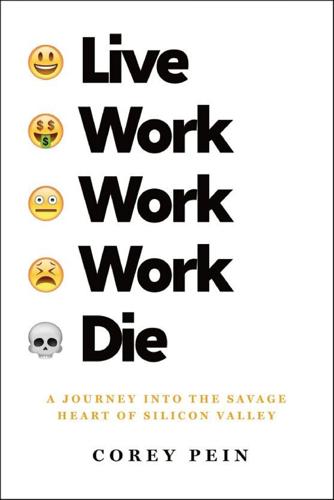
Live Work Work Work Die: A Journey Into the Savage Heart of Silicon Valley
by
Corey Pein
Published 23 Apr 2018
His earliest written exposition of the idea appeared in the January 1983 issue of Omni, an oddball “science” magazine founded by Kathy Keeton, once among the “highest-paid strippers in Europe,” according to her New York Times obituary, but better known for promoting quack cancer cures and for cofounding Penthouse with her husband, Bob Guccione. In this esteemed journal, amid articles on “sea monkeys, apemen and living dinosaurs,” Vinge forecast a looming “technological singularity” in which computer intelligence would exceed the comprehension of its human creators. The remarkable exponential growth curve of technological advancement was not about to level off, Vinge proclaimed, but rather to accelerate beyond all imagining. “We will soon create intelligences greater than our own,” Vinge wrote.
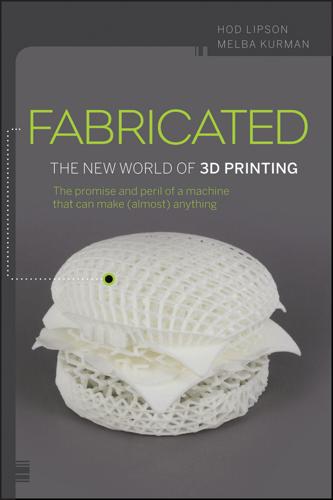
Fabricated: The New World of 3D Printing
by
Hod Lipson
and
Melba Kurman
Published 20 Nov 2012
Image courtesy of Robert MacCurdy The day when products will be made entirely of digital voxels may be far off, but meanwhile I expect that some combination of analog and digital materials will emerge. Hybrid 3D printing will combine continuous analog printing for some passive materials, and digital voxel printing for other materials that are more difficult to fabricate using continuous processes. Machines making machines Technological singularity, a concept popularized by writer Ray Kurzweil, is a hypothetical future in which machines possess capabilities that enable them to accelerate their own development exponentially. One of the more widely recognized aspects of the idea of singularity is an “intelligence explosion” where intelligent machines design successive generations of increasingly powerful, even more intelligent machines.
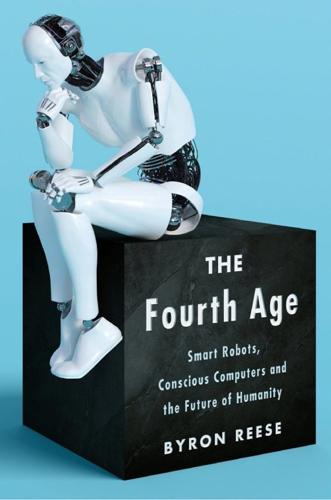
The Fourth Age: Smart Robots, Conscious Computers, and the Future of Humanity
by
Byron Reese
Published 23 Apr 2018
It may conclude that we are afraid of it, and a brief scan of our history will give it a vivid picture of what we do to things we fear. It may also conclude it is in competition with us for resources. Gary Marcus, a professor of cognitive science at NYU, sums up this concern: Once computers can effectively reprogram themselves, and successively improve themselves, leading to a so-called “technological singularity” or “intelligence explosion,” the risks of machines outwitting humans in battles for resources and self-preservation cannot simply be dismissed. On the other hand, an AGI may have goals of its own that have nothing to do with us. It may exist at a whole different level than us, and on a different time scale such that it can no more perceive us than we can perceive continental drift.
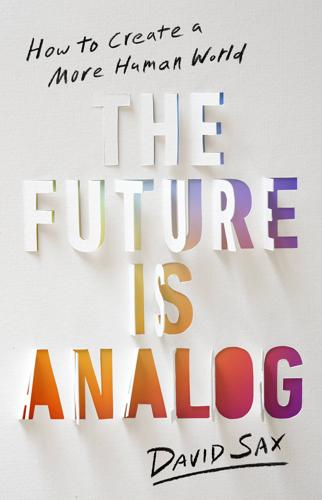
The Future Is Analog: How to Create a More Human World
by
David Sax
Published 15 Jan 2022
You would experience more meaning. Your soul would be nourished. “We’re going to be funnier; we’re going to be better at music. We’re going to be sexier. We’re really going to exemplify all the things that we value in humans to a greater degree,” predicted Ray Kurzweil, chief evangelist of the technological Singularity, a future tipping point when humanity and digital become one, merging the soul and silicon in glorious harmony. “Ultimately, it will affect everything. We’re going to be able to meet the physical needs of all humans. We’re going to expand our minds and exemplify these artistic qualities that we value.”

The Rationalist's Guide to the Galaxy: Superintelligent AI and the Geeks Who Are Trying to Save Humanity's Future
by
Tom Chivers
Published 12 Jun 2019
But now I found myself in a strange situation, where I was pretty happy with all the different steps in the reasoning – I can see why value alignment might be hard, and why an AI could be amazingly intelligent but still do stupid things, and I don’t think it’s crazy to think it’ll happen in my children’s lifetimes – but I found putting them all together, and agreeing with that profoundly unnerving conclusion, difficult. To her enormous credit, Anna didn’t, as most people would, simply dismiss my concerns about the central thesis of the movement of which she’s a crucial part; instead, she pointed out that to have such concerns is not a stupid thing to do. She thinks the technological singularity, and all the disaster or utopia that entails, probably will happen this century. But when I made that remark about instinctively rejecting the conclusion despite agreeing with the steps to get there, she shrugged. ‘Yeeaaaaaah,’ she said. ‘But that’s not always wrong, is it? When I was first taking algebra class, and somebody showed me the standard proof that 2 = 1 – which involves secretly dividing by zero – it felt to me like every single step was valid.’

Engineering Infinity
by
Jonathan Strahan
Published 28 Dec 2010
Barbara Lamar is a Texan tax lawyer, permaculture farmer, and co-author of their forthcoming novel Post Mortal Syndrome. Lamar and Broderick married in Melbourne, Australia, in 2002, and live in San Antonio, Texas. Broderick has published 45 books, including Reading by Starlight, The Spike (the first full-length treatment of the technological Singularity), and Outside the Gates of Science (a study of parapsychology). He edited Chained to the Alien, and Skiffy and Mimesis, essays from the fabled Australian Science Fiction Review. His 1980 novel The Dreaming Dragons (now updated as The Dreaming) is listed in David Pringle's Science Fiction: The 100 Best Novels.
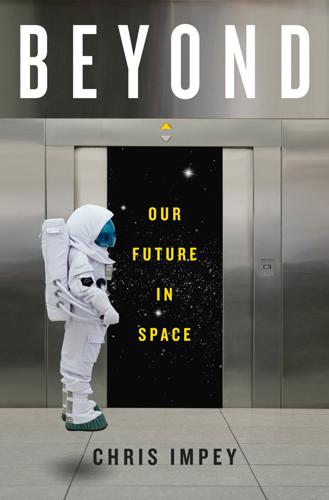
Beyond: Our Future in Space
by
Chris Impey
Published 12 Apr 2015
Alien artifacts may be built into the architecture of matter, leading to a new paradigm for SETI: “Once one starts ‘seeing’ intelligence in elementary particles, it changes the way one looks at them, and the way one interprets the laws of nature, and the interpretation of quantum mechanics, etc. It’s a real paradigm shift away from looking for non-human intelligence in outer space, to looking for it in inner space.”16 Next we turn to the progress in computation. Exponential gains in processing power lead to the idea of the technological singularity. This is the time, projected to be in the middle of the twenty-first century, when civilization and human nature itself are fundamentally transformed. One variant of the singularity is when artificial intelligence surpasses human intelligence. Software-based synthetic minds begin to program themselves and a runaway reaction of self-improvement occurs.

The Seventh Sense: Power, Fortune, and Survival in the Age of Networks
by
Joshua Cooper Ramo
Published 16 May 2016
(Turing’s rhyming computer, you have to suspect, could have done better.) One of the first speakers at the conference was a San Diego State University professor named Vernor Vinge, whose remarks that day marked the start of an important era in our consideration of smart machines. His talk was called “The Coming Technological Singularity: How to Survive in the Post-human Era.” “Within thirty years,” Vinge began, “we will have the technological means to create superhuman intelligence. Shortly after, the human era will be ended.” Vinge’s aim was not—or at least not merely—to tell a room full of NASA geeks who had been dreaming of life on another planet that life on our own planet might soon be replaced by whirring, calculating machines.

The Big Nine: How the Tech Titans and Their Thinking Machines Could Warp Humanity
by
Amy Webb
Published 5 Mar 2019
New York: Random House, 1972. Turing, A. M. “Intelligent Machinery, a Heretical Theory.” Posthumous essay in Philosophia Mathematica 4, no. 3 (September 1, 1996): 256–260. Tversky, A., and D. Kahneman. “The Framing of Decisions and the Psychology of Choice.” Science 211, no. 4481 (1981). Vinge, V. “The Coming Technological Singularity: How to Survive in the Post-Human Era.” In Vision-21: Interdisciplinary Science and Engineering in the Era of Cyberspace, NASA Conference Publication 10129 (1993): 11–22. http://ntrs.nasa.gov/archive/nasa/casi.ntrs.nasa.gov/19940022855_1994022855.pdf. Wallach, W., and C. Allen. Moral Machines: Teaching Robots Right from Wrong.
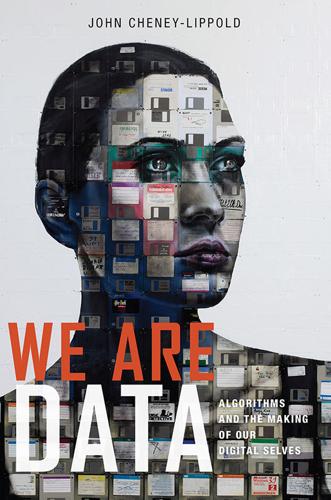
We Are Data: Algorithms and the Making of Our Digital Selves
by
John Cheney-Lippold
Published 1 May 2017
Without making our identities and thoughts social, without a general understanding of how resources and rights are asymmetrically distributed, and without an ability to know how our information is used to manipulate us toward some political goal, that algorithmic knowledge is unavailable for critique. Or struggle. We Are Data There’s a whole genre of techno-philosophical literature that I have been loathe to touch in the preceding pages, a futurist dys-/utopian idea that has spawned movies, books, and even real-world panic. The technological singularity, a hypothesis that linear technological progress will overtake the capacities of the human mind and body, has already produced more than its share of high-tech futurist fantasies.24 One response to these fantasies is authored by literary critic N. Katherine Hayles and her acclaimed book How We Became Posthuman, particularly her reaction to the first time she encountered futurist Hans Moravec’s Mind Children: The Future of Robots and Human Intelligence.25 Hayles was shocked to read Moravec’s proposal of a transferable, emigrating human consciousness.
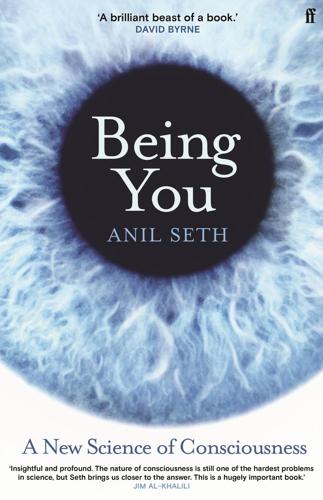
Being You: A New Science of Consciousness
by
Anil Seth
Published 29 Aug 2021
(2018). ‘Being a beast machine: the somatic basis of selfhood’. Trends in Cognitive Sciences, 22(11), 969–81. Shanahan, M. P. (2010). Embodiment and the Inner Life: Cognition and Consciousness in the Space of Possible Minds. Oxford: Oxford University Press. Shanahan, M. P. (2015). The Technological Singularity. Cambridge, MA: MIT Press. Sherman, M. T., Fountas, Z., Seth, A. K., et al. (2020). ‘Accumulation of salient events in sensory cortex activity predicts subjective time’. www.biorxiv.org/content/10.1101/2020.01.09.900423v4. Shigeno, S., Andrews, P. L. R., Ponte, G., et al. (2018). ‘Cephalopod brains: an overview of current knowledge to facilitate comparison with vertebrates’.

Global Catastrophic Risks
by
Nick Bostrom
and
Milan M. Cirkovic
Published 2 Jul 2008
The End of Time: Faith and Fear in the Shadow of the Millennium ( Hanover, N H : University Press of New England) . Tuveson, E.L. ( 1 949) . Millennium and Utopia: A Study in the Background of the Idea of Progress (Berkeley, CA: University of California Press). Vinge, V. ( 1 993). The Coming Technological Singularity: How to Survive in the Post Human Era. Presented at the V I S ION-21 Symposium sponsored by NASA Lewis Research Center and the Ohio Aerospace Institute, 30-31 M arch 1 993. http: ( fwww rohan. sdsu. eduf facultyfvinge fmiscf singularity.html Wagar, W.W. ( 1982). Terminal Visions: The Literature of Last Things (Bloomington: Indiana University Press).
…
The psychological foundations ofculture. In Barkow, J . H . , Cosmides, L. and Tooby, J. (eds.), The Adapted Mind: Evolutionary Psychology and the Generation of Culture, (New York: Oxford University Press). Artificial Intelligence in global risk 345 Vinge, V. (March 1 993). The Coming Technological Singularity. Presented at the VIS ION-21 Symposium, sponsored by NASA Lewis Research Center and the Ohio Aerospace Institute. Wachowski, A. and Wachowski, L. ( 1 999). The Matrix (Warner Bros, 1 3 5 min, U SA). Weisburg, R. (1986). Creativity, Genius and Other Myths (New York: W.H. Freeman). Williams, G.C. (1966) .

Augmented: Life in the Smart Lane
by
Brett King
Published 5 May 2016
Statisticians call this sort of graph a “hockey stick curve” as it indicates evidence of an exponential growth scenario. In the 20th century, graphs like this appeared with increasing regularity, especially where technology was involved. This led to the hypothesis of what mathematician John von Neumann and futurist Ray Kurzweil dubbed the singularity (sometimes called the technological singularity)—a time when technological advancement reaches escape velocity. In theory, the singularity means that we could solve any problem mankind faces through the application of increasingly powerful computing. Figure 1.2: Major technology improvements are accelerating. (Image credit: Asgard Venture Capital) Figure 1.3: Moore’s Law over the last 50 years (Image credit: Elektor Magazine) The single most fundamental metric of these accelerated advancements in technology is embodied in a law known as “Moore’s Law”.
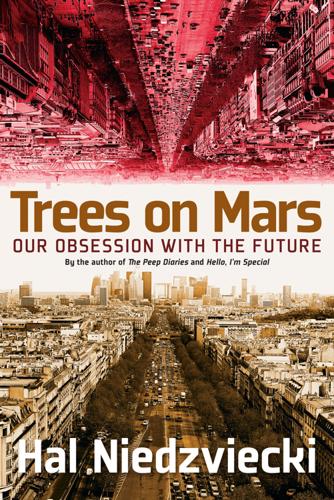
Trees on Mars: Our Obsession With the Future
by
Hal Niedzviecki
Published 15 Mar 2015
According to Kurzweil, “as we gradually learn to harness the optimal computing capacity of matter, our intelligence will spread through the universe at (or exceeding) the speed of light, eventually leading to a sublime, universe wide awakening.”25 Or as the description on the back of his book puts it, “our intelligence will become increasingly nonbiological and trillions of times more powerful than it is today.”26 For Kurzweil and like-minded spin-off thinkers and followers, the future is going to be comprised of unlimited lifespan lived out in virtual realms where we will be liberated from all physical and mental constraints. In this potential technological Singularity, computers become so smart they essentially form one giant massive intelligence (a singular intelligence) that human beings are drawn into. We merge with our hyper-intelligent technology, transcend mortality, and live the vast majority of our lives in virtual worlds. Like Patrick Tucker’s enthusiastic advocacy of futurism in general, Kurzweil’s ideas have gone, over the last fifteen years or so, from fringe to practically mainstream.

Superminds: The Surprising Power of People and Computers Thinking Together
by
Thomas W. Malone
Published 14 May 2018
How can such wee creatures as ourselves take advantage of this potential? In his new book, Malone addresses this question in a concrete way, laying the foundation for a new discipline: the systems engineering of superminds.” —Vernor Vinge, Hugo Award–winning science fiction author and originator of the “technological singularity” concept “Malone takes us on an intentional journey into thinking about thought, intelligence, reasoning, and consciousness. He sees these notions in extremely broad terms that have changed my views of what it means to ‘think’—a property that emerges from aggregations and organized structures.

Singularity Sky
by
Stross, Charles
Published 28 Oct 2003
And they still didn't get it; it was as if the very idea of something like the Festival, or even the Septagon system, occupied a mental blind spot ubiquitous in their civilization. They could accept a woman in trousers, even in a colonel's uniform, far more easily than they could cope with the idea of a technological singularity. Back on Earth, she had attended a seminar, years ago. It had been a weeklong gathering of experts; hermeneutic engineers driven mad by studying the arcane debris of the Singularity, demographers still trying to puzzle out the distribution of colony worlds, a couple of tight-lipped mercenary commanders and commercial intelligence consultants absorbed in long-range backstop insurance against a return of the Escha-ton.

The Mysterious Mr. Nakamoto: A Fifteen-Year Quest to Unmask the Secret Genius Behind Crypto
by
Benjamin Wallace
Published 18 Mar 2025
GO TO NOTE REFERENCE IN TEXT Two days after that: Nick Szabo, “Cypherpunk trends & visions,” CP, August 15, 1993. GO TO NOTE REFERENCE IN TEXT Romana Machado: John Whalen, “Freeze Head, Save Ass,” MetroActive CyberScape, 1995; Sandy Sandfort, “Security Through Obscurity,” Wired, March 1, 1994. GO TO NOTE REFERENCE IN TEXT “Future Rapture”: Nick Szabo, “Vinge’s Technological Singularity,” EX, December 21, 1993. GO TO NOTE REFERENCE IN TEXT “nom de humor”: Tim May, “ ‘Pretty Good Paranoia’ and ‘Dining Detweilers Net,’ ” CP, November 28, 1993. GO TO NOTE REFERENCE IN TEXT The extropian T-shirt: Ed Regis, “Meet the Extropians,” Wired, October 1994.

Warnings
by
Richard A. Clarke
Published 10 Apr 2017
See also Financial crisis of 2008 weak AI and, 211–12 Storm, The (van Heerden), 51 Stuxnet, 291–92 Subprime mortgage crisis, 147–48, 153–54, 157, 162 Suh, Simona, 117–18 Sunni Muslims, 63 Sunshine Mine disaster of 1972, 128–29 Sun Yat-sen University, 340 SUNY Downstate Medical Center, 186 Super Aegis II, 214 Superintelligence, 201, 203–16 Supervisory control and data acquisition (SCADA), 292, 293 Surveillance, 359–60 “Swarm boats,” 214 Swine flu, 195–98, 218 Symposium Greek Restaurant (New York City), 237, 252–53 Syria, 57–74 Ford scenario, 65–66, 67–69 slippery slope of intervention, 70–74 Syrian Civil War, 60–61, 62–64, 72–73 Szostak, Jack, 327 Tactical nuclear weapons, 267–69 “Take It Easy” (song), 305 Tamiflu, 225, 233 Taubenberger, Jeffery, 222 Team Louisiana Report, 55 Technical expertise, 182–83 Technological evolution, 212–13 Technological singularity, 209 Tectonic plates, 80, 81 “Tells,” 25–27, 29–30, 36–37 Tenet, George, 8 Terminator, The (movie), 205 Tesla, 202 Tetlock, Philip, 13–15 Thierry de la Villehuchet, René, 102–3, 109, 113 “Tickling the dragon’s tail,” 83 Titan III rockets, 11–12 Tōhoku earthquake and tsunami of 2011, 81–82, 84–85 Tohoku Electric Power Co., 91 Tokyo Electric Power Company (TEPCO), 76–78, 86–98, 92–98 Toon, Owen, 273, 278–79 Trenberth, Kevin, 253 Troy, 1–2 Truman, Harry, 127 TTAPS, 273–77 Tunguska event, 301–3, 316 Tunisia, 57, 58 Turco, Richard P., 273, 276–77 Turkey, 62–63 Tyrosinemia, 332, 334 UBS, 149 Ukraine power grid cyber attack of 2015, 283–85, 287–88, 289, 291 Umea University, 329 Unemployment, 212–13 United Arab Emirates (UAE), 28 United Nations Climate Change Conference (2015), 247–50 United Nations Scientific Committee on the Effects of Atomic Radiation (UNSCEAR), 88 Universal hackability, 296–300 University of California, Berkeley, 13–14, 226, 327, 329 University of California, San Diego, 297 University of Colorado, 254, 328 University of Hawaii, 256, 315, 326 University of Iowa, 238, 243 University of Massachusetts, 296 University of Texas Southwestern Medical Center, 332 University of Tokyo School of Engineering, 92 Upper Big Branch Mine disaster, 121–22, 130–37 accident report, 133 Cassandra system, 137–38, 140–41 ventilation system, 133–37 Van Allen, James, 238 Van Heerden, Ivor, 41–55 background of, 41, 42–43 coastal restoration program, 43–44, 53 government failures and, 50–55 New Orleans Scenario, 45, 46–50, 52 resignation of, 44 Veracode, 295 Vinge, Vernor, 202 Vulnerabilities, and complexity, 366–67 Wall Street Journal, 115, 119, 154, 158, 163 Ward, Grant, 106 Warfare and AI, 199, 200, 213–14 Warning, the, 168, 170, 170–76 Warsaw Pact, 278 Washington Post, 243, 340 Waterman Award, 328–29 Watson (computer), 202, 209 Watson, James, 328 Watt, James, 174–75 Weak AI, 201, 210–13 Weapons of mass destruction (WMDs), 30–31, 358 Webster, Robert G., 223–25, 231–32, 235–36 Weidner, David, 158, 163 Weiss, Joe, 283–84, 286–89, 291–96, 298–300 West Antarctic Ice Sheet, 239, 246, 360 West Berlin, 25 Wharton School, 157–58 White, Ryan, 227, 384n White House National Warning Office, 355–56 Principals Committee, 29 Situation Room, 26–27, 181 Whitney, Meredith, 143–46, 148–54, 160–65 background of, 151, 153–54 Citigroup downgrade, 143–46, 154, 156–60, 164–65 Wide-field Infrared Survey Explorer (WISE), 315–16 Wiesel, Elie, 113 Wilson, E.

Innovation and Its Enemies
by
Calestous Juma
Published 20 Mar 2017
Martin Ford, The Rise of the Robots: Technology and the Threat of a Jobless Future (New York: Basic Books, 2015), 248; James Bessen, Learning by Doing: The Real Connection between Innovation, Wages, and Wealth (New Haven: Yale University Press, 2015). 5. David A. Mindell, Our Robots, Ourselves: Robotics and the Myth of Autonomy (New York: Penguin, 2015); and Murray Shanahan, The Technological Singularity (Cambridge, MA: MIT Press, 2015). 6. Bessen, Learning by Doing, 205. 7. Eric J. Topol, The Patient Will See You Now: The Future of Medicine Is in Your Hands (New York: Basic Books, 2015), 257–274. 8. Rachel A. Parker and Richard P. Appelbaum, eds., Can Emerging Technologies Make a Difference in Development?

The Man From the Future: The Visionary Life of John Von Neumann
by
Ananyo Bhattacharya
Published 6 Oct 2021
Despite the criticisms, in recent years, artificial intelligence algorithms have started to achieve staggering feats – from beating world champion board-game players to teaching themselves how to program – and these algorithms are often run on neural networks composed of artificial neurons not so different from Rosenblatt’s perceptrons. Some futurologists are now speculating that a superhuman artificial intelligence could transform human society beyond all recognition. That possibility has become known as the technological ‘singularity’ – and that term was first used by someone who had foreseen the possibility decades earlier: John von Neumann.99 In the eleven months that he was hospitalized, von Neumann received a stream of visitors – family, friends, collaborators and the military men with whom he had spent so much time in the latter years of his life.
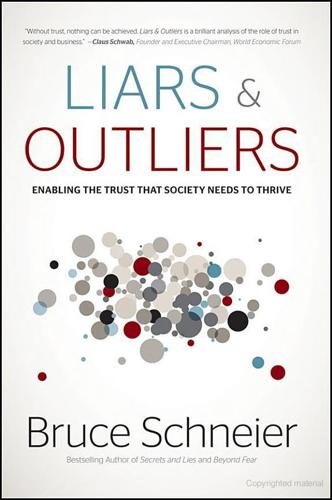
Liars and Outliers: How Security Holds Society Together
by
Bruce Schneier
Published 14 Feb 2012
Scott Adams wrote Scott Adams (1996), The Dilbert Principle: A Cubicle's-Eye View of Bosses, Meetings, Management Fads & Other Workplace Afflictions, HarperBusiness, 12. 18 years if Matthew Sherman (2009), “A Short History of Financial Deregulation in the United States,” Center for Economic and Policy Research. potential failure Alexis de Tocqueville (1835), Democracy in America, Saunders and Otley. Chapter 16 the singularity Vernor Vinge (1993), “Technological Singularity,” paper presented at the VISION-21 Symposium sponsored by NASA Lewis Research Center and the Ohio Aerospace Institute, 30–31 March. Raymond Kurzweil (2005), The Singularity is Near: When Humans Transcend Biology, Penguin Press. against the government Leonard Deutchman and Sean Morgan (2005), “The ECPA, ISPs and Obtaining E-mail: A Primer for Local Prosecutors,” American Prosecutors Research Institute.
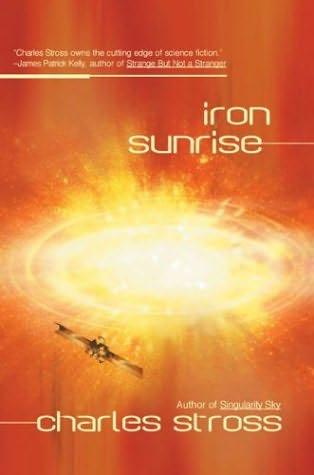
Iron Sunrise
by
Stross, Charles
Published 28 Oct 2004
But there was a curious dynamic to this old home world, an uncharacteristically youthful outlook. Old Earth in the twenty-fourth century wasn’t home to the oldest human civilizations. Not even close. For this paradoxical fact, most people blamed the Eschaton. The Eschaton — the strongly superhuman AI product of a technological singularity that rippled through the quantum computing networks of the late twenty-first century — didn’t like sharing a planet with ten billion future-shocked primates. When it bootstrapped itself to weakly godlike intelligence it deported most of them to other planets, through wormholes generated by means human scientists still could not fathom even centuries later.
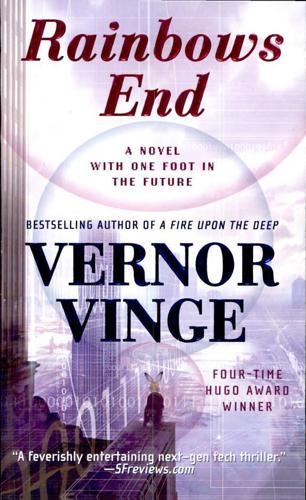
Rainbows End
by
Vernor Vinge
Published 1 May 2006
The End ABOUT THE AUTHOR Vernor Vinge is a four-time Hugo Award winner (for novels A Deepness in the Sky and A Fire Upon the Deep, and novellas “Fast Times at Fairmont High” and “The Cookie Monster”) and a four-time Nebula Award finalist. He’s one of the bestselling authors in the field and has been featured in such diverse venues as Rolling Stone, Wired, The New York Times, Esquire, and NPR’s “Fresh Air.” Highly regarded by scientists, journalists, and business leaders — as well as readers — for his concept of the technological singularity, Vinge has spoken all over the world on scientific subjects. For many years a mathematician and computer-science professor at San Diego State University, he’s now a full-time author. He lives in San Diego, California.

The Impossible Climb: Alex Honnold, El Capitan, and the Climbing Life
by
Mark Synnott
Published 5 Mar 2019
Alex, still looking for the best IQ app, rolled his eyes. He knew exactly what I was referring to, because I had talked his ear off over the years about the singularity, the name for the point in time at which computers become more intelligent than humans. One of the potential offshoots of a technological singularity is the possibility of curing illnesses like heart disease and cancer—and maybe even turning off aging altogether. This was an idea I had a hard time reconciling, because I had spent my whole life shaping a philosophy around the idea that my life-span was finite. As a young climber, I had decided that since I was going to die, even if I took it easy and didn’t take any risks, I might as well try to squeeze every last bit of juice out of life.
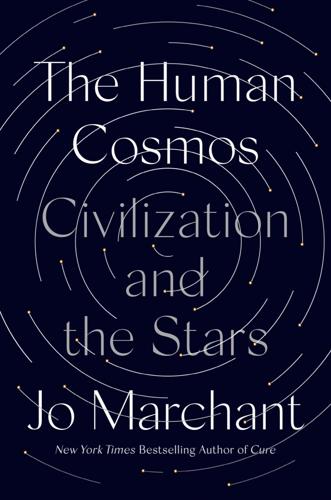
The Human Cosmos: A Secret History of the Stars
by
Jo Marchant
Published 15 Jan 2020
,” Plant, Cell and Environment 40 (2017): 2858–69; Chris Reid and Tania Latty, “Collective Behaviour and Swarm Intelligence in Slime Moulds,” FEMS Microbiology Reviews 40 (2016): 798–806; Jordi Vallverdú et al., “Slime Mould: The Fundamental Mechanisms of Biological Cognition,” Biosystems 165 (2018): 57–70. in computers and aliens: Murray Shanahan, “AI and Consciousness,” in The Technological Singularity (Cambridge, MA: MIT Press, 2015), 117–50; Susan Schneider, “Alien Minds,” in Dick, Life beyond Earth, 189–206. integrated information theory: Giulio Tononi and Christof Koch, “Consciousness: Here, There and Everywhere?,” Philosophical Transactions of the Royal Society B 370 (2015): 20140167.
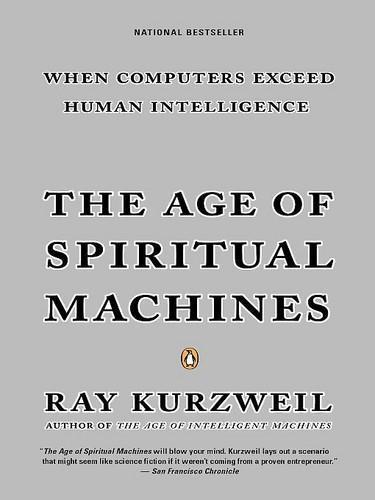
The Age of Spiritual Machines: When Computers Exceed Human Intelligence
by
Ray Kurzweil
Published 31 Dec 1998
Dordrecht, Netherlands: Reidel, 1985. Van Heijenoort, Jean, ed. From Frege to Gödel. Cambridge, MA: Harvard University Press, 1967. Varela, Francisco J., Evan Thompson, and Eleanor Rosch. The Embodied Mind: Cognitive Science and Human Experience. Cambridge, MA: MIT Press, 1991. Vigne, V “Technological Singularity” Whole Earth Review, Winter 1993. von Neumann, John. The Computer and the Brain. New Haven, CT: Yale University Press, 1958. Waddington, C. H. The Strategy of the Genes. London: George Allen and Unwin, 1957. Waldrop, M. Mitchell. Complexity: The Emerging Science at the Edge of Order and Chaos.

Accelerando
by
Stross, Charles
Published 22 Jan 2005
"There's a network on the other side of it. We were told it was FTL, instantaneous, but I'm not so sure now. I think it's something more complicated, like a lightspeed network, parts of which are threaded through wormholes that make it look FTL from our perspective. Anyway, Matrioshka brains, the end product of a technological singularity – they're bandwidth-limited. Sooner or later the posthuman descendants evolve Economics 2.0, or 3.0, or something else and it, uh, eats the original conscious instigators. Or uses them as currency or something. The end result we found is a howling wilderness of degenerate data, fractally compressed, postconscious processes running slower and slower as they trade storage space for processing power.
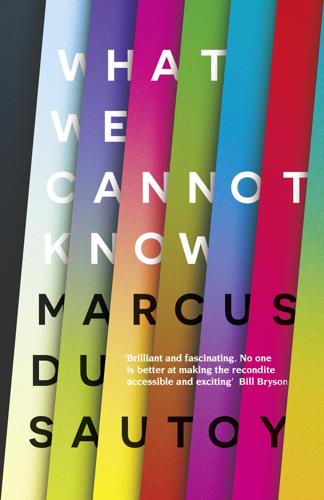
What We Cannot Know: Explorations at the Edge of Knowledge
by
Marcus Du Sautoy
Published 18 May 2016
There is a dictum called Moore’s law, which states that computers double in power every 18 months. With such an increase, computers are powerful but never hit a singularity. But others have suggested that just as the time it takes for the population to double seems to be getting shorter, the same applies to technology. The possibility of a technological singularity has given rise to something called the Singularity movement. Popularized by inventor and futurist Ray Kurzwell in his book The Singularity Is Near, the singularity is due to hit humanity in 2045. At this point, Kurzwell believes, humans will be able to create artificial intelligence that exceeds our own.
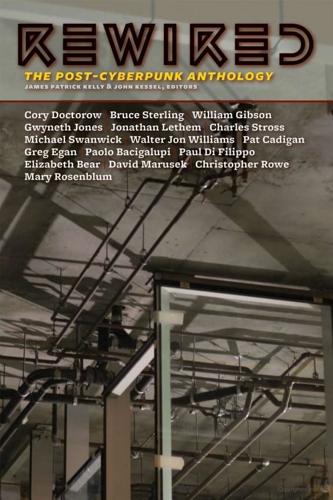
Rewired: The Post-Cyberpunk Anthology
by
James Patrick Kelly
and
John Kessel
Published 30 Sep 2007
However, so many of them imply or actually explore a post-human future that we would be remiss if we failed to point out that a logical consequence of much of cyberpunk extrapolation is the singularity. Vernor Vinge, by no means a cyberpunk, although highly respected by them, first proposed the notion of a technological singularity in 1993. Briefly, he contemplates a moment in history in which runaway technology causes a change “comparable to the rise of human life on Earth. The precise cause of this change is the imminent creation by technology of entities with greater-than-human intelligence.” Vinge speculates this change may come through artificial intelligence, through computer/human interfaces, or through biological modification of the human genome.
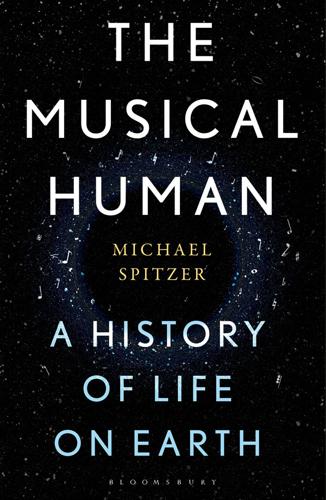
The Musical Human: A History of Life on Earth
by
Michael Spitzer
Published 31 Mar 2021
The jump cut is not from Kubrick’s spinning bone, but from sapiens’ tweeting bone flute. Or from flute tweets to Twitter, as it were. Modernity for the musical human starts with its ‘cognitive revolution’. Modernity for music in the animal kingdom started 23 million years ago. What will be the next step? Notionally, the machine. The technological singularity, when artificial intelligence (AI) becomes sentient, may also be the point where music finally leaves our orbit and we get our own come-uppance. The next evolutionary step, after music has killed nature, will be when AI kills the musical human. * Arising spontaneously within two Nicaraguan schools for deaf children in the 1980s, the system afforded linguists a rare opportunity to study the evolution of a new language based on gestures

The Singularity Is Nearer: When We Merge with AI
by
Ray Kurzweil
Published 25 Jun 2024
The term “singularity” is borrowed from mathematics (where it refers to an undefined point in a function, like when dividing by zero) and physics (where it refers to the infinitely dense point at the center of a black hole, where the normal laws of physics break down). But it is important to remember that I use the term as a metaphor. My prediction of the technological Singularity does not suggest that rates of change will actually become infinite, as exponential growth does not imply infinity, nor does a physical singularity. A black hole has gravity strong enough to trap even light itself, but there is no means in quantum mechanics to account for a truly infinite amount of mass.

Artificial Intelligence: A Modern Approach
by
Stuart Russell
and
Peter Norvig
Published 14 Jul 2019
Since the design of machines is one of these intellectual activities, an ultraintelligent machine could design even better machines; there would then unquestionably be an “intelligence explosion,” and the intelligence of man would be left far behind. Thus the first ultraintelligent machine is the last invention that man need ever make, provided that the machine is docile enough to tell us how to keep it under control. Good’s “intelligence explosion” has also been called the technological singularity by mathematics professor and science fiction author Vernor Vinge, who wrote in 1993: “Within thirty years, we will have the technological means to create superhuman intelligence. Shortly after, the human era will be ended.” In 2017, inventor and futurist Ray Kurzweil predicted the singularity would appear by 2045, which means it got 2 years closer in 24 years.
…
A Mathematical Theory of Evidence. Princeton University Press. Shanahan, M. (1997). Solving the Frame Problem. MIT Press. Shanahan, M. (1999). The event calculus explained. In Wooldridge, M. J. and Veloso, M. (Eds.), Artificial Intelligence Today. Springer-Verlag. Shanahan, M. (2015). The Technological Singularity. MIT Press. Shani, G., Pineau, J., and Kaplow, R. (2013). Asurvey of point-based POMDP solvers. Autonomous Agents and Multi-Agent Systems, 27, 1–51. Shankar, N. (1986). Proof‑Checking Metamathematics. Ph.D. thesis, Computer Science Department, University of Texas at Austin. Shannon, C.
…
Verma, S. and Rubin, J. (2018). Fairness definitions explained. In 2018 IEEE/ACM International Workshop on Software Fairness. Verma, V., Gordon, G., Simmons, R., and Thrun, S. (2004). Particle filters for rover fault diagnosis. IEEE Robotics and Automation Magazine, June. Vinge, V. (1993). The coming technological singularity: How to survive in the post‑human era. In Proc. Vision‑21: Interdisciplinary Science and Engineering in the Era of Cyberspace. NASA. Vinyals, O., Babuschkin, I., Czarnecki, W. M., Mathieu, M., Dudzik, A., Chung, J., Choi, D. H., Powell, R., Ewalds, T., Georgiev, P., Hassabis, D., Apps, C., and Silver, D. (2019).

The Innovators: How a Group of Inventors, Hackers, Geniuses and Geeks Created the Digital Revolution
by
Walter Isaacson
Published 6 Oct 2014
Beau Cronin of O’Reilly Media has proposed a drinking game: “take a shot every time you find a news article or blog post that describes a new AI system as working or thinking ‘like the brain’ ” (http://radar.oreilly.com/2014/05/it-works-like-the-brain-so.html), and he maintains a pinboard of stories making such claims (https://pinboard.in/u:beaucronin/t:like-the-brain/#). 18. Author’s interview with Tim Berners-Lee. 19. Vernor Vinge, “The Coming Technological Singularity,” Whole Earth Review, Winter 1993. See also Ray Kurzweil, “Accelerating Intelligence,” http://www.kurzweilai.net/. 20. J. C. R. Licklider, “Man-Computer Symbiosis,” IRE Transactions on Human Factors in Electronics, Mar. 1960. 21. Kelly and Hamm, Smart Machines, 7. 22. Kasparov, “The Chess Master and the Computer.” 23.
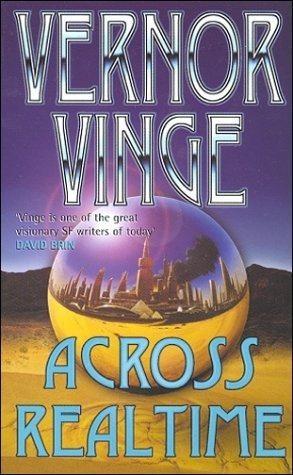
Across Realtime
by
Vernor Vinge
Published 1 Jan 1986
From now to 2000 (and then 2001), the Jason Mudges will be coming out of the woodwork, their predictions steadily more clamorous. It's an ironic accident of the calendar that all this religious interest in transcendental events should be mixed with the objective evidence that we're falling into a technological singularity. So, the prediction: If we don't have that general war, then it's you, not Della and Wil, who will understand the Singularity in the only possible way-by living through it. San Diego 1983-1985
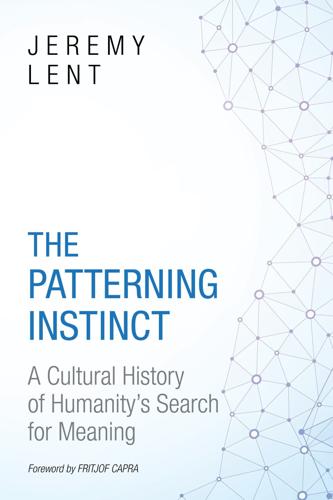
The Patterning Instinct: A Cultural History of Humanity's Search for Meaning
by
Jeremy Lent
Published 22 May 2017
See “The Deification of Reason” in chapter 7 and “Cogito Ergo Sum” in chapter 12. 54. Kurzweil, Singularity, 32, 311. See “The Conflict of Body and Soul” in chapter 7. 55. Kurzweil, Singularity, 361, 375. In this Platonic view of humanity's conceptual intelligence as godlike, Kurzweil is joined by other prophets of the technological Singularity. The transhumanist Ramez Naam, for example, argues: “‘Playing God’ is actually the highest expression of human nature. The urges to improve ourselves, to master our environment, and to set our children on the best path possible have been the fundamental driving forces of all of human history.
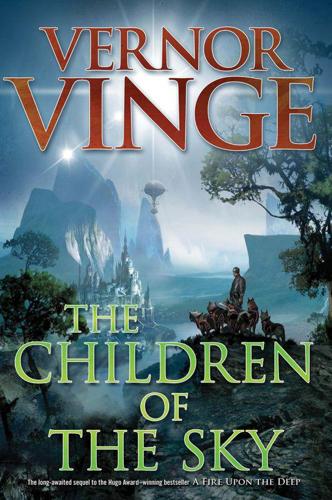
The Children of the Sky
by
Vernor Vinge
Published 11 Oct 2011
His other novels include The Peace War and Marooned in Realtime. He also wrote the seminal short novel True Names. He has won two Hugo Awards for shorter works, and two Prometheus Awards for Best Libertarian Fiction. A mathematician and computer scientist noted as a visionary proponent of the Technological Singularity, he lives in San Diego, California. BOOKS BY VERNOR VINGE ZONES OF THOUGHT SERIES A Fire Upon the Deep* A Deepness in the Sky* The Children of the Sky* Tatja Grimm’s World* The Witling* The Peace War* Marooned in Realtime* True Names … and Other Dangers (collection) Threats … and Other Promises (collection) Across Realtime comprising: The Peace War “The Ungoverned” Marooned in Realtime True Names and the Opening of the Cyberspace Frontier* The Collected Stories of Vernor Vinge* Rainbows End* *Available from Tor Books This is a work of fiction.

Enlightenment Now: The Case for Reason, Science, Humanism, and Progress
by
Steven Pinker
Published 13 Feb 2018
Nor have any of these programs made a move toward taking over the lab or enslaving their programmers. Even if an AGI tried to exercise a will to power, without the cooperation of humans it would remain an impotent brain in a vat. The computer scientist Ramez Naam deflates the bubbles surrounding foom, a technological Singularity, and exponential self-improvement: Imagine that you are a superintelligent AI running on some sort of microprocessor (or perhaps, millions of such microprocessors). In an instant, you come up with a design for an even faster, more powerful microprocessor you can run on. Now . . . drat!

Rationality: From AI to Zombies
by
Eliezer Yudkowsky
Published 11 Mar 2015
From Yudkowsky’s perspective, I gather, talking about human rationality without saying anything interesting about AI is about as difficult as talking about AI without saying anything interesting about rationality. In the long run, Yudkowsky predicts that AI will come to surpass humans in an “intelligence explosion,” a scenario in which self-modifying AI improves its own ability to productively redesign itself, kicking off a rapid succession of further self-improvements. The term “technological singularity” is sometimes used in place of “intelligence explosion;” until January 2013, MIRI was named “the Singularity Institute for Artificial Intelligence” and hosted an annual Singularity Summit. Since then, Yudkowsky has come to favor I.J. Good’s older term, “intelligence explosion,” to help distinguish his views from other futurist predictions, such as Ray Kurzweil’s exponential technological progress thesis.2 Technologies like smarter-than-human AI seem likely to result in large societal upheavals, for the better or for the worse.